Henry Moore’s Large Spindle Piece, a cast bronze sculpture from 1974, now installed in the newly reappointed King’s Cross Square. For the past forty years the station was hidden behind an “awful tin shed” temporary canopy. It’s eventual removal, and the long overdue revelation of Lewis Cubitt’s elegant facade, is celebrated by the arrival of this captive “flying shuttle”.
A short walk down Gray’s Inn Road takes us to the Gagosian Gallery on Britannia Street where there’s a magnificent display of sculpture by Richard Serra. This first piece is Dead Load; the most simple sculpture possible, a dead weight, a plinth on top of a plinth, a steel shoebox.
In the next room there are twenty or more great slabs of steel plate, stood on end like a roomful of giant dominoes, all ready to topple if one should fall. They’re encountered like a hedge maze and we’re drawn in and through and around. This piece is called Ramble.
The gallery is a steelyard. I’m surprised we were not issued with hardhats as we entered.
This amazing piece is called Backdoor Pipeline. Just two steel sheets, bent concave across their width and one bent concave along it’s length, the other convex along it’s length. Simple, but so sublime.
There were groups of art students throughout the gallery, all with sketchbooks and pencils, recording their primitive reactions. My camera suddenly felt very sophisticated.
The final piece was perhaps the most direct. One enormous steel sheet balanced at right-angles on top of another, a precarious see-saw if it were not wedged diagonally into the corners of the room. You can almost feel the weight with your eyes. This was my favourite piece, London Cross, site-specific and seemingly tailor-made for King’s Cross.
For more information visit the Gagosian Gallery website – Richard Serra.
From Britannia Street we walked down Argyle Street by Whidborne House, scene of our arrival in central London 35 years ago when it was administered as Shortlife Community Housing (SCH). In those days the gate was always open; the accommodation may have been sub-standard but the rent was low and it was a great location. Here’s a nice memoir by Angela Cobbinah.
There were lots of dusty little second-hand bookshops back then, my favourite was the Marchmont Bookshop on Burton Street, I hope it’s still going. The photo above is not a bookshop, it’s Generator, a hostel on Tavistock Place with a window like a Jasper Johns painting.
Another favourite bookshop was always Skoob Books, now in the Brunswick Centre, but I used to visit them in Sicilian Avenue where I once found myself browsing the bookshelves alongside Michael Foot.
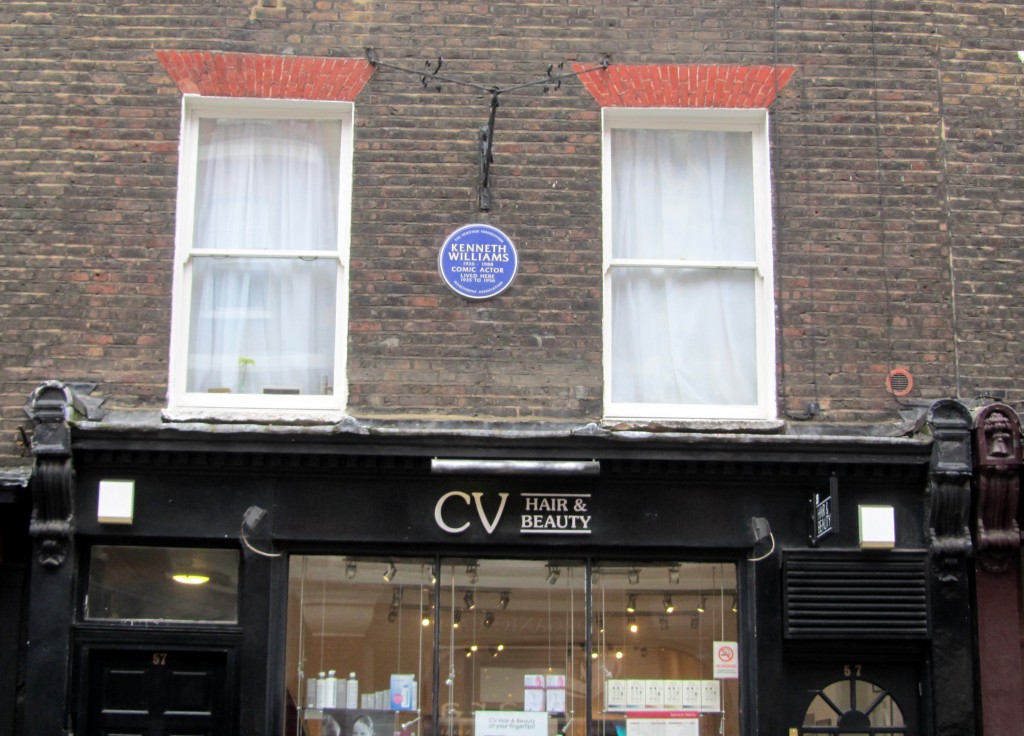
Marchmont Street, memorable for Alara Wholefoods, Gay’s The Word and Kenneth Williams. Also for the Gate Bloomsbury, the cinema where we saw Michaelangelo Antonioni’s The Passenger and watched as Jack Nicholson and Maria Schneider appeared outside in the Brunswick Centre.
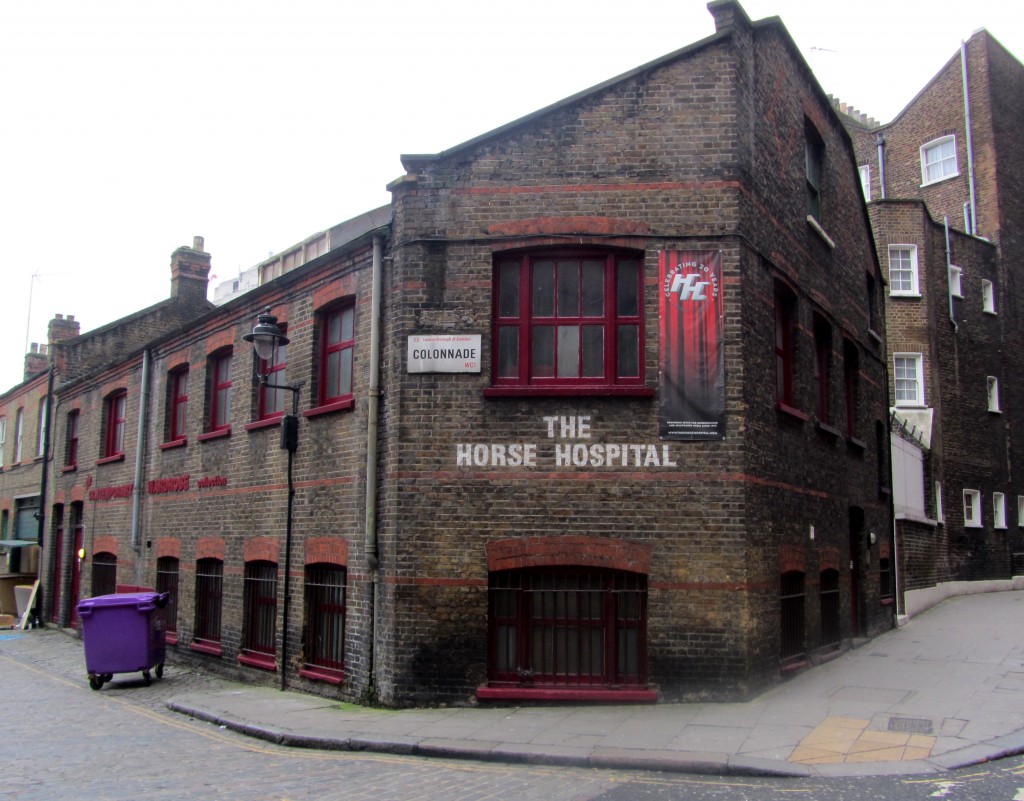
On Herbrand Street we passed The Horse Hospital, aka The Hor’spital, then down by Coram’s Fields, where we could only ever get in if we took our children with us. Around the corner in Lamb’s Conduit Street, The Lamb allowed access without children.
Across Theobalds Road (pronounced Tibaulds) we found No.1 Princeton Street, aka Tudor House, which is presently occupied by Tim Hunkin’s Novelty Automation.
Twitter had told me ‘a mad arcade of home-made coin operated machines’ is coming to Holborn.
We’d last seen this slot machine on the pier in Southwold.
I had a piece of flint in my pocket, found in a field in Hertfordshire, so I submitted it to the scrutiny of the Nicholas Serota automaton. He leant forward and considered it approvingly, but then backed off, shook his head and, with a disdainful flick of his forked tongue, judged that it was not art after all.
I wondered if I should get a second opinion. At one end of Princeton Street is Gray’s Inn, full of barrister’s chambers, and at the other end is Red Lion Square, home of the Ethical Society. Maybe I could appeal to their better judgement. A pity they don’t have slot machines too.
We crossed Southampton Row and walked down Bloomsbury Way along by Sicilian Avenue, once home to Skoob Books. Was there also a vintage clothes shop called Black’s? What became of them?
I had hoped we might call in at Austin Desmond for another reminder of Southwold but by the time we got to Pied Bull Yard the gallery was closed so we went straight to the British Museum.
It was disappointing to find the sculptures from the west pediment of the Parthenon so depleted. The river god Ilissos and the divine messenger Iris had both been removed.
I was more used to seeing them like this. In the early 1980s I developed a bit of an obsession with these wonderful pieces of marble. I visited often and made large black & white photographs of them. I had an idea to make a suite of seven painted constructions that would fly in formation across the wall, but it never happened. I was too overwhelmed by the beauty of the originals.
Aphrodite, Greek goddess of love, adopted by the Romans as Venus, idol of the Renaissance,
reminds me mostly of Stooping Nude Back Turned, a favourite drawing by Henri Matisse.
Outside again, down Museum Street and Coptic Street and part of Shaftesbury Avenue to St Giles High Street and Denmark Street, aka Tin Pan Alley, historic home of music publishers, recording studios and shops selling musical instruments. But its future seems uncertain. The area around Tottenham Court Road station is to be redeveloped as part of the Crossrail project. I don’t have all the facts but here’s a better informed account by Richard Williams – Farewell to Tin Pan Alley.
We walked through Soho: Greek Street, Frith Street, Dean Street, Wardour Street, Berwick Street, Poland Street to Great Marlborough Street. We’d been here many times in the past to visit the Schott Music shop for wooden recorders, both descant and tenor, and lots of sheet music.
We continued across Regent Street and down Maddox Street by St George’s Church, often a good place for a lunchtime chamber music recital, then along Brook Street to the home of two musical heroes, George Frideric Handel and Jimi Hendrix.
Beyond Claridge’s we turned left into Davies Street where we discovered Vivienne Westwood shrouded in scaffolding. The shop window seemed to be asking for a photograph.
Then right across the street we saw another Gagosian Gallery but no Richard Serra this time. Instead we found a Wunderkammer of Henry Moore.
The gallery’s end wall housed a large photograph showing, amongst other things, and by a nice coincidence, a plaster maquette for Large Spindle Piece seen earlier outside King’s Cross station.
The exhibition is a cabinet of curiosities, most of them transferred from Moore’s inspirational maquette studio at Perry Green.
The observation of nature is part of an artist’s life, it enlarges his form-knowledge, keeps him fresh and from working only by formula, and feeds inspiration… I have found principles of form and rhythm from the study of natural objects such as pebbles, rocks, bones, trees, plants… There is in nature a limitless variety of shapes and rhythms… from which the sculptor can enlarge his form-knowledge experience – Henry Moore.
There was also a collection of framed works on paper, one of which looked remarkably like a drawing of the flint in my pocket, from our last visit to Perry Green, but rejected by Tim Hunkin’s art expert.
In the centre of the room, a beautiful porcelain sculpture, Three Way Ring.
Afterwards we headed home via Bond Street tube station and travelled underground direct to Liverpool Street where we emerged by Richard Serra’s Fulcrum.
I’ve loved this amazing sculpture since I first discovered it in 1987. The surroundings may have dated but this piece seems timeless. Five huge steel plates leaning like a house of cards, such a seemingly precarious arrangement for a public space. I still feel an unnerving frisson as I enter, but these days its awe-inspiring balance seems lost on the outcast smokers who now use it as a refuge and a chimney.
※
PS: Yesterday, 10 March 2015, on my way to Clerkenwell, I saw that Britannia Street was closed off. There was a huge truck parked in the street carrying a familiar looking load. I went over for a closer look and found that the Richard Serra exhibition at the Gagosian Gallery was being dismantled. It was a stroke of luck that I was passing by. Seeing these huge pieces of steel on the back of two trucks and the enormous crane needed to lift them gives another perspective to their serene placement inside the gallery. The logistics of installing these sculptures must be phenomenal.
This is the gallery’s backdoor, the exit for Backdoor Pipeline before I got here. I watched as the steel slabs of Ramble were gently removed. What a privilege to be in the right place at just the right time!


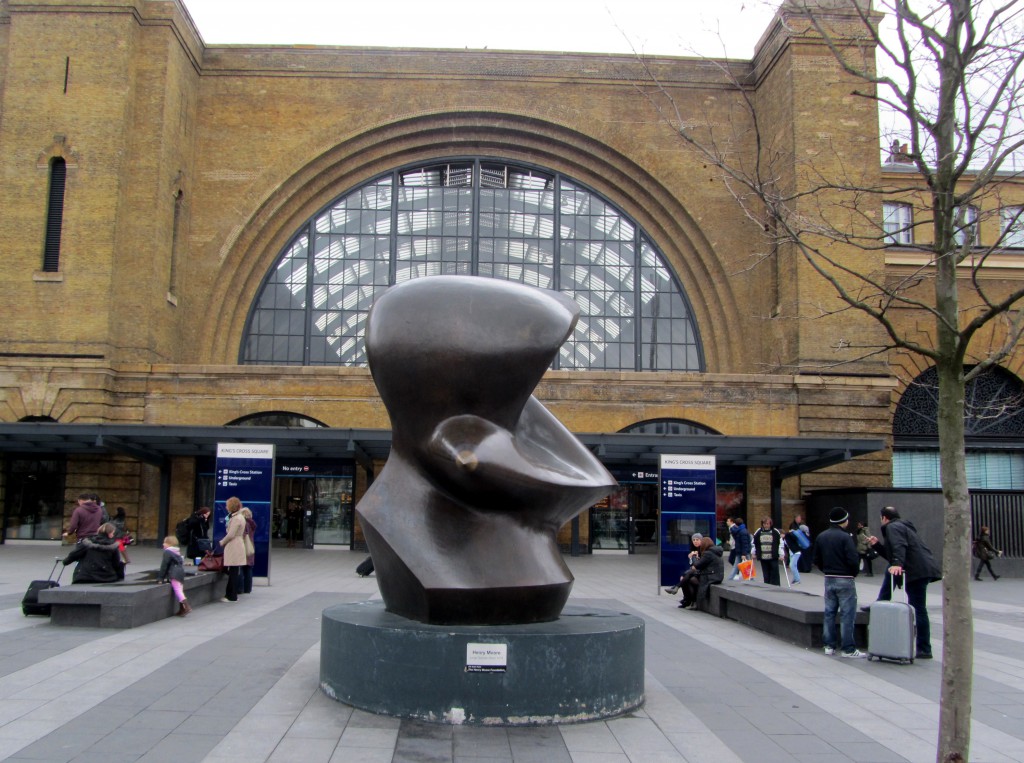

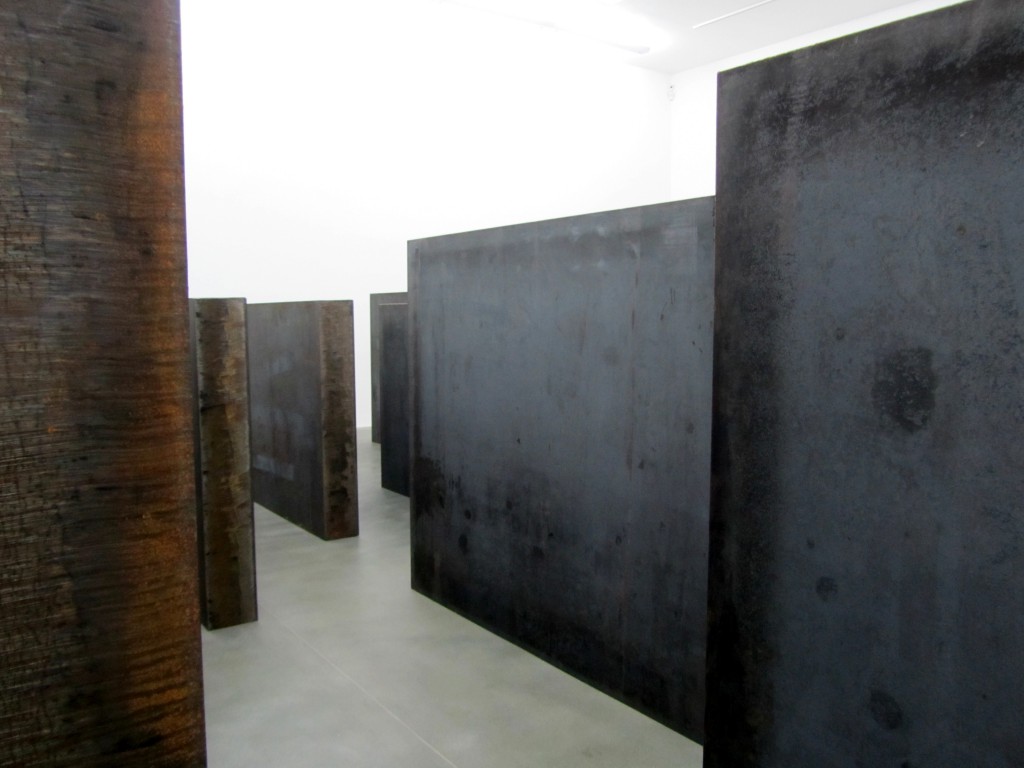
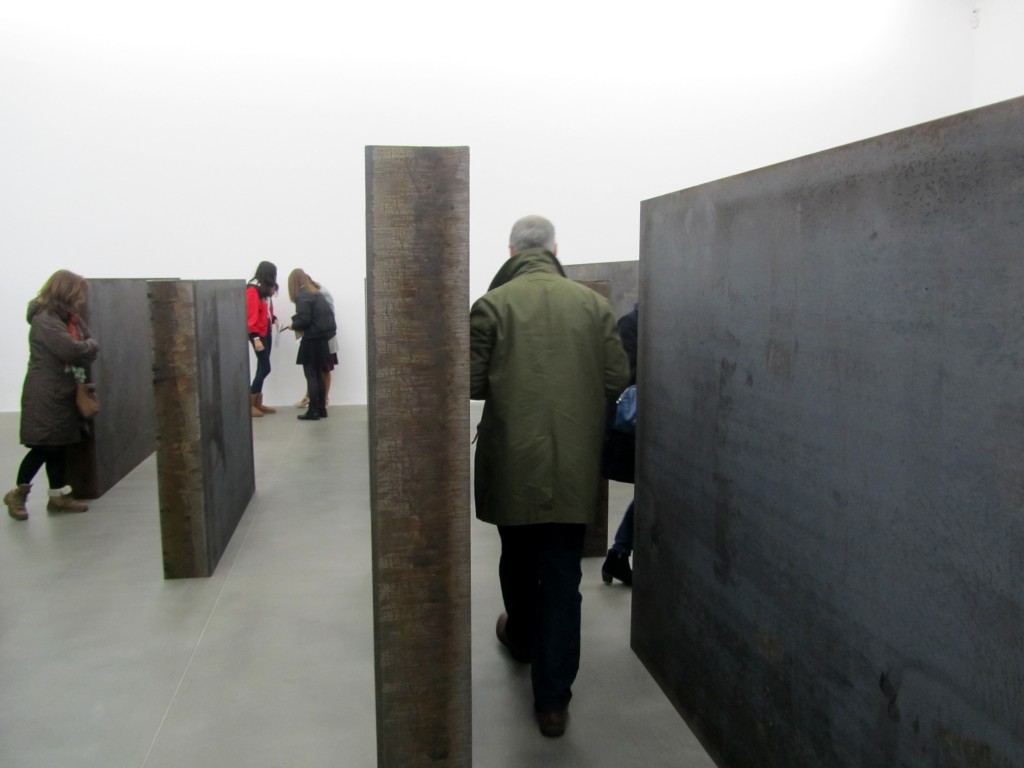
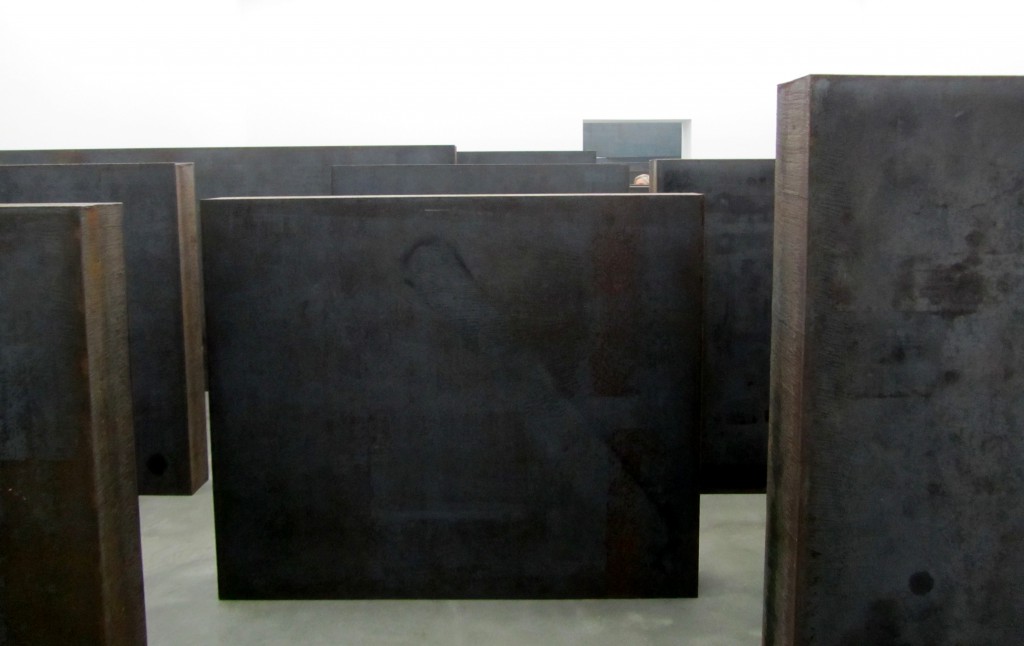

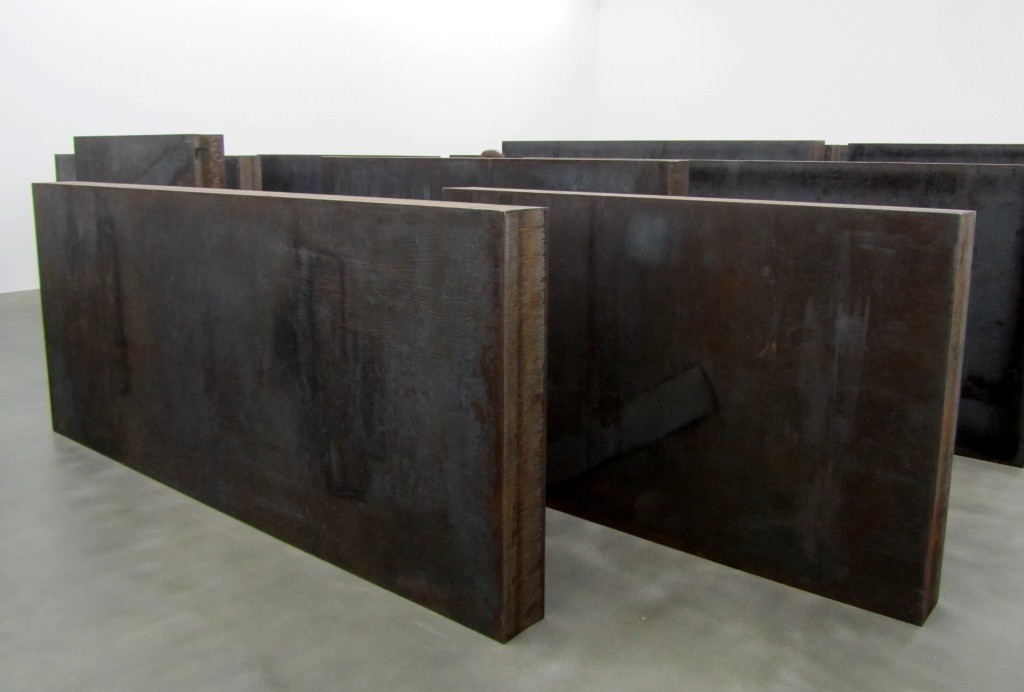
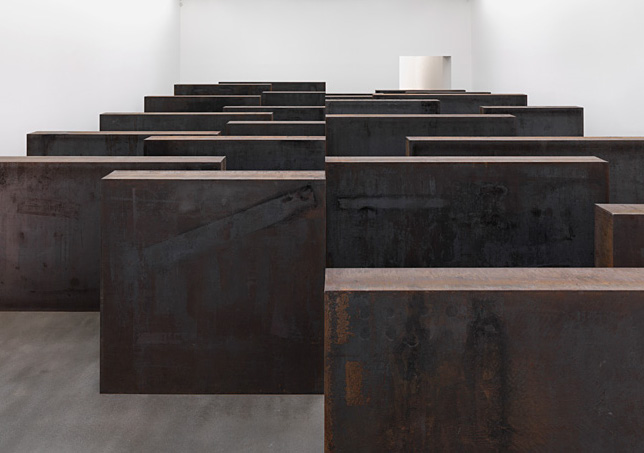
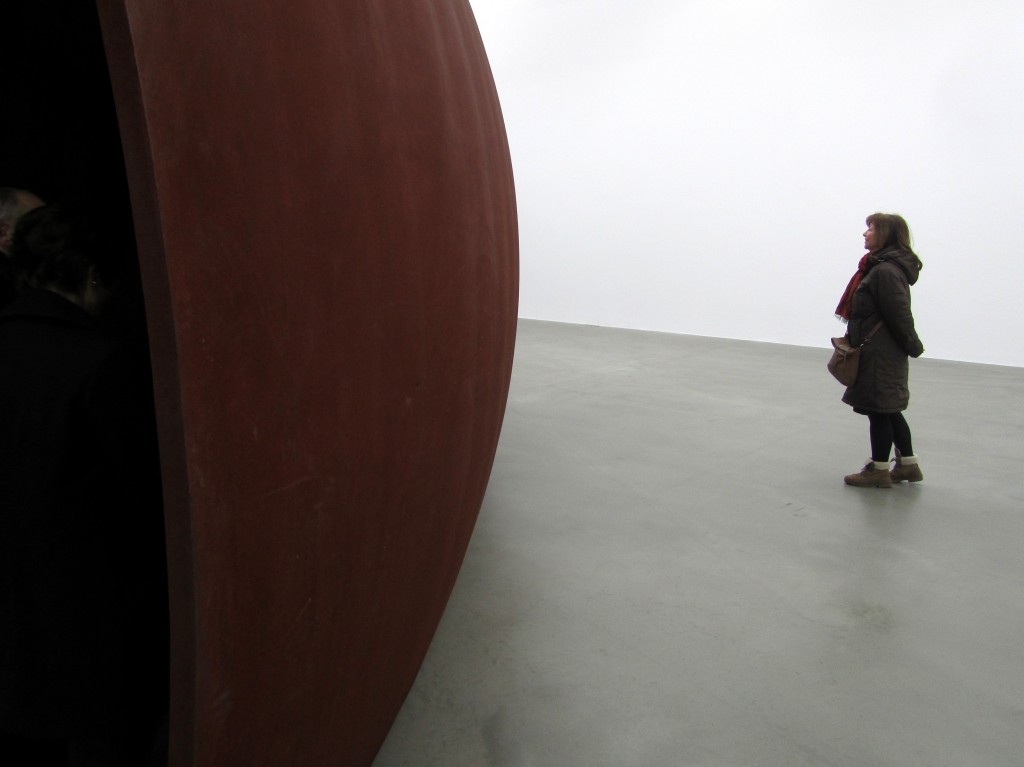
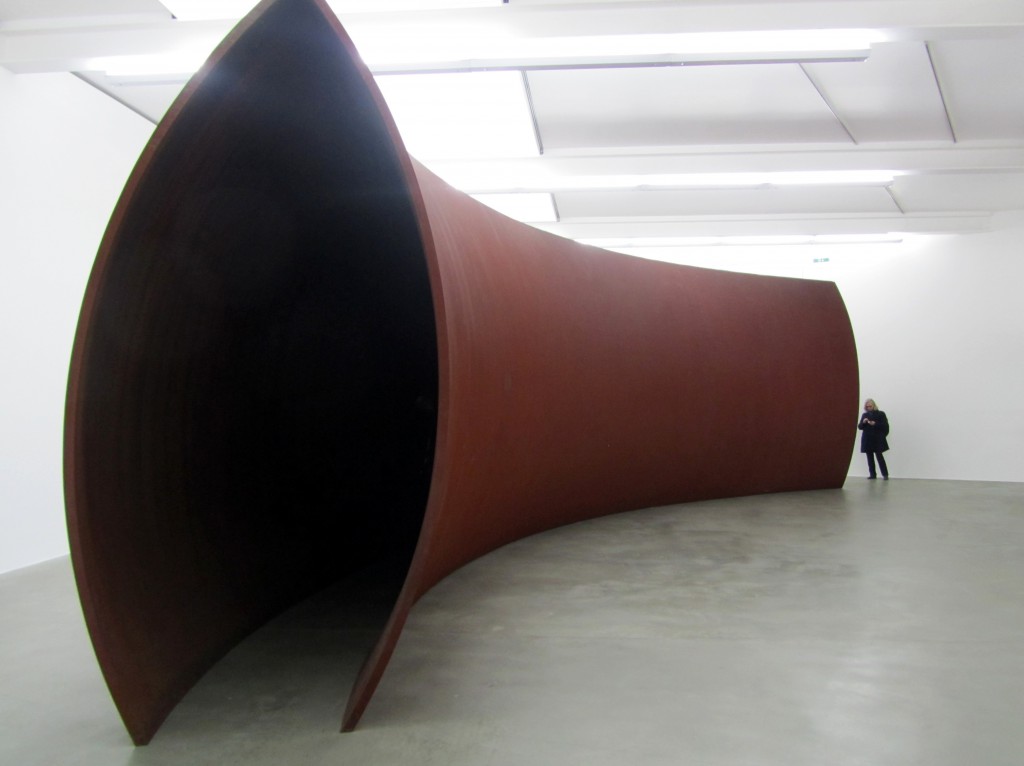
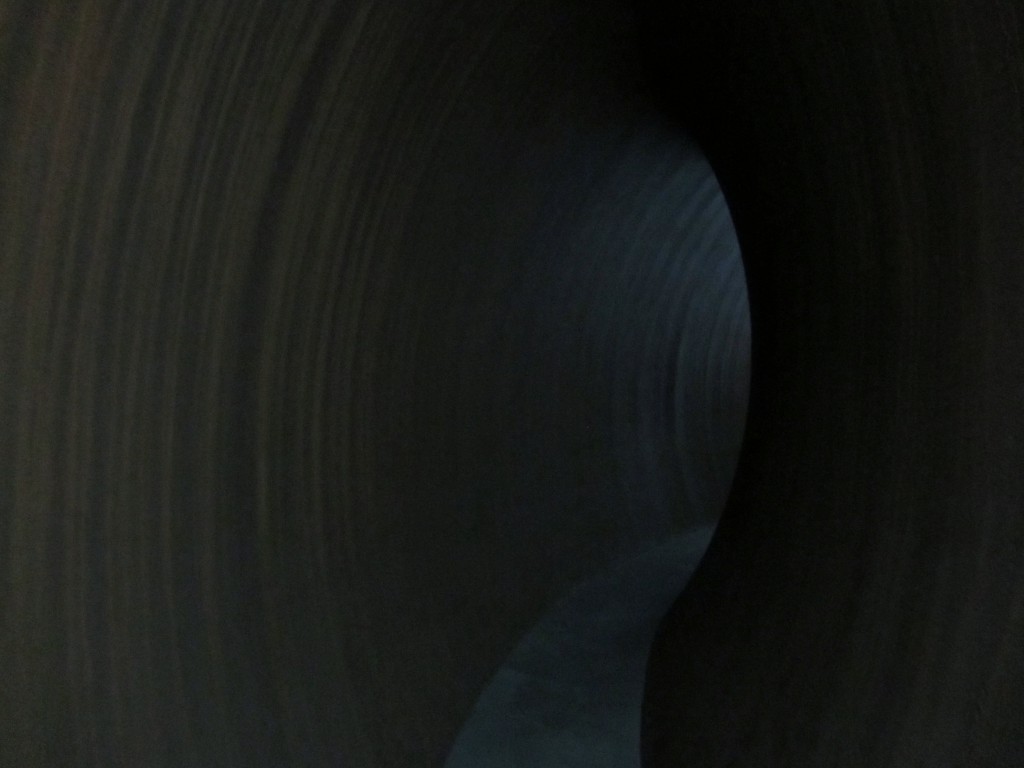
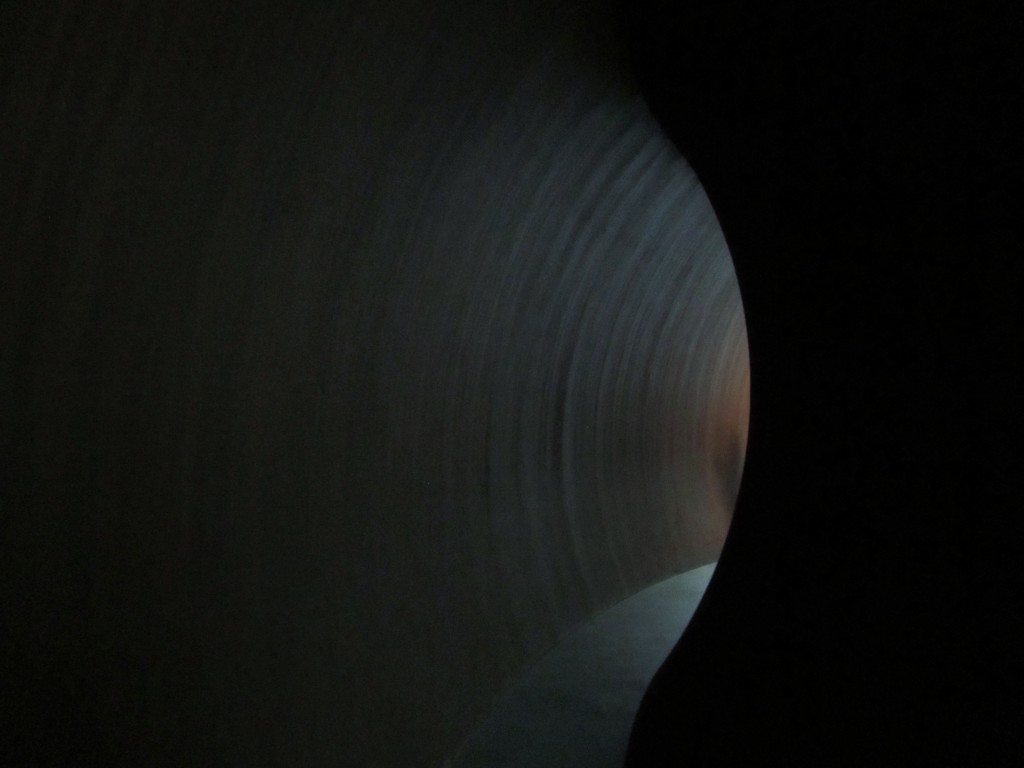
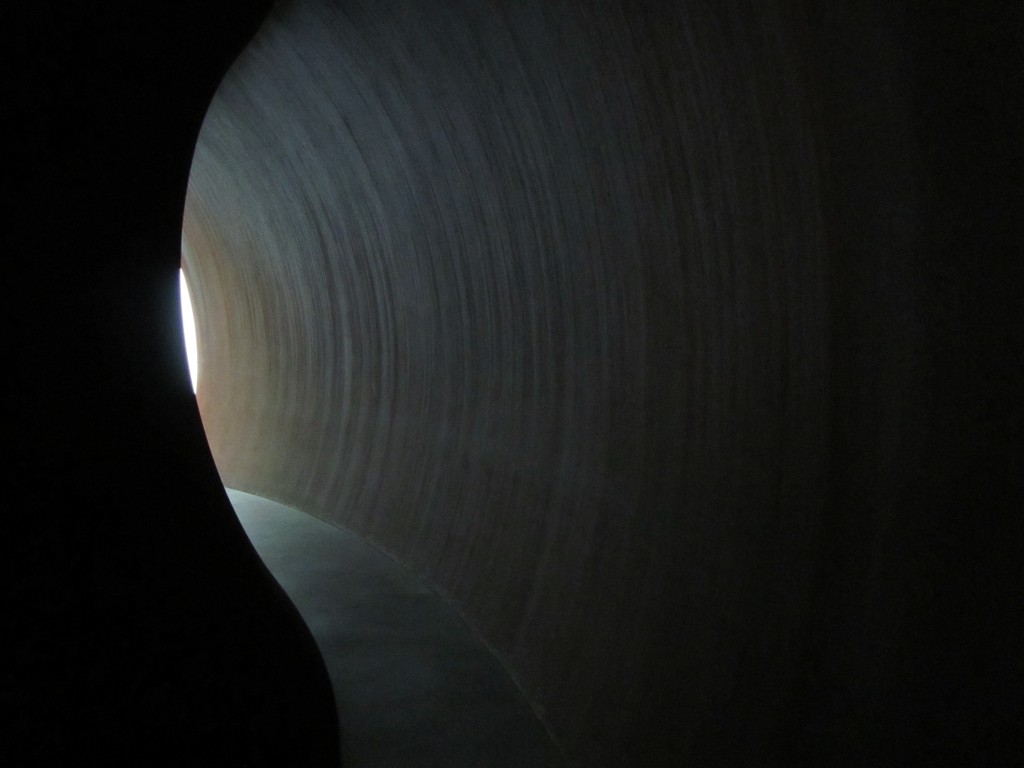

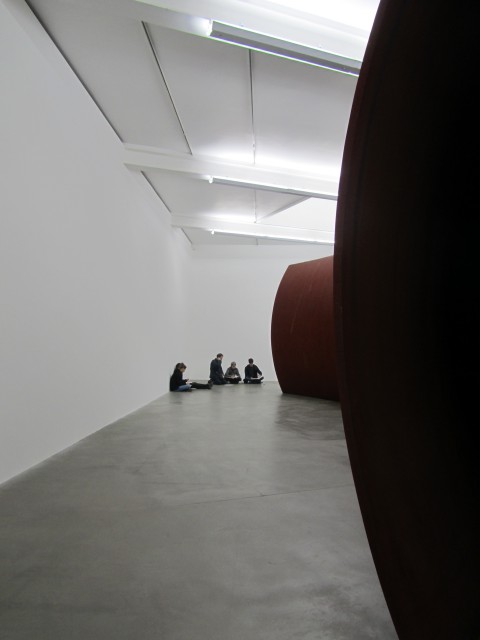

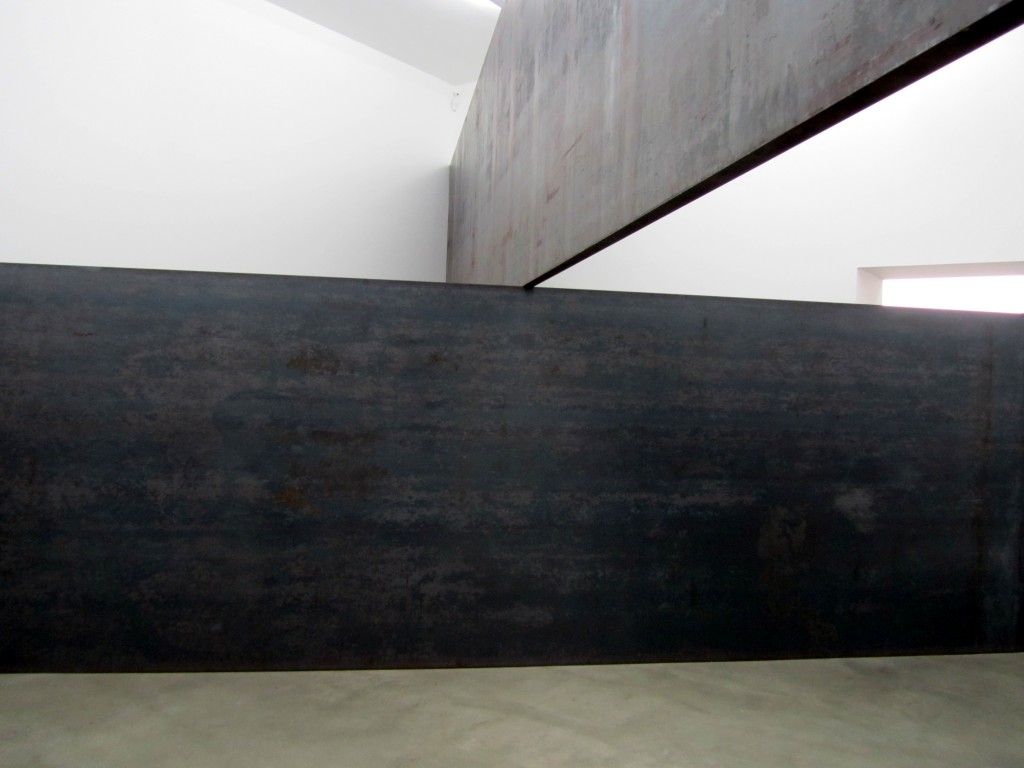
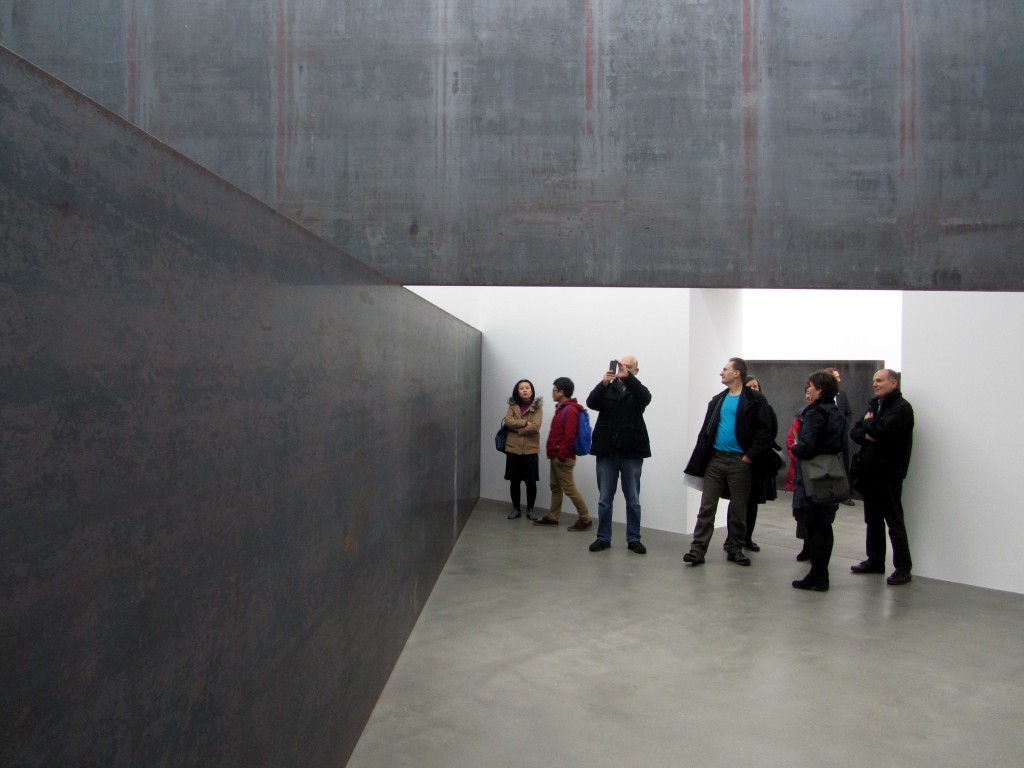
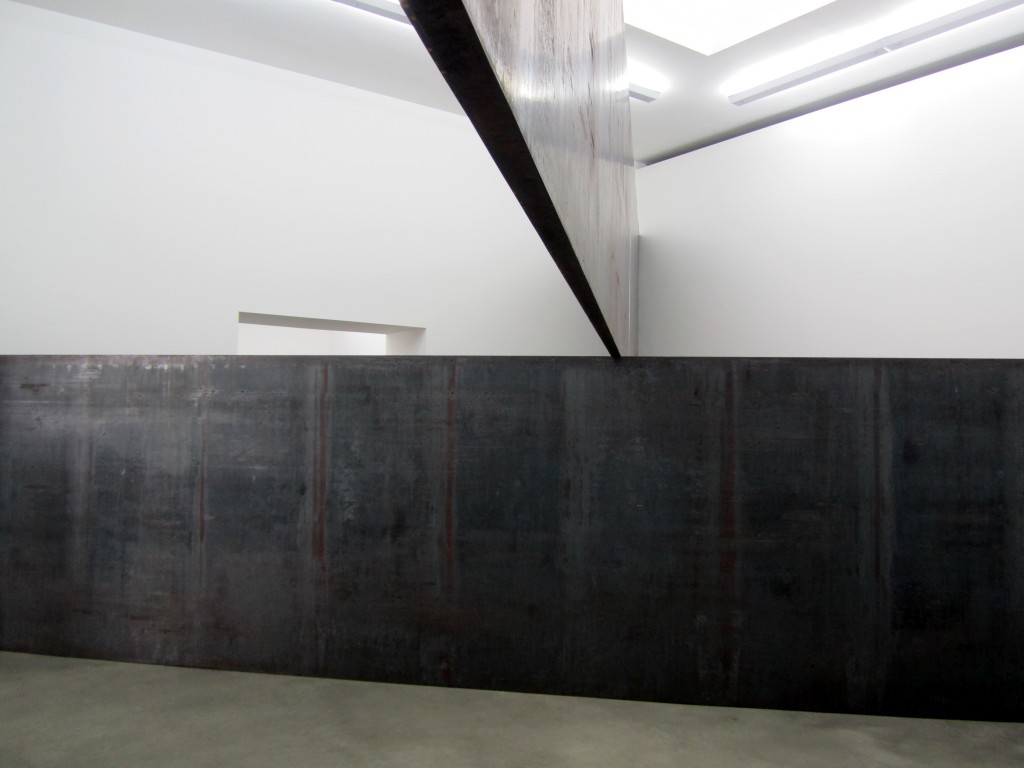

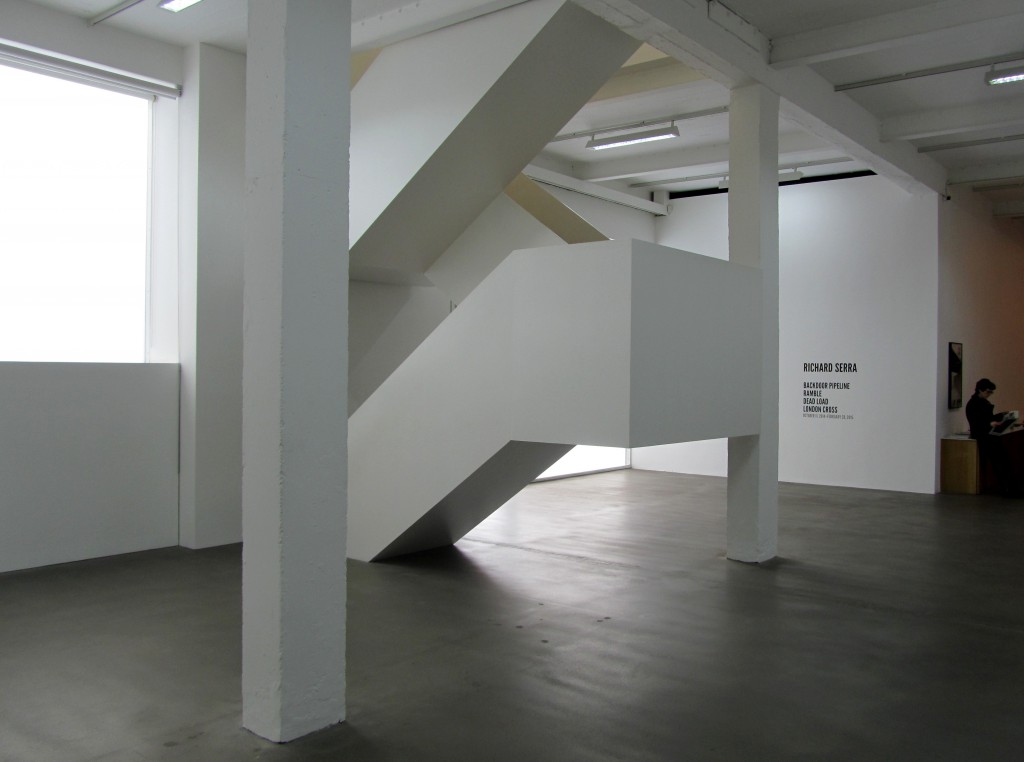

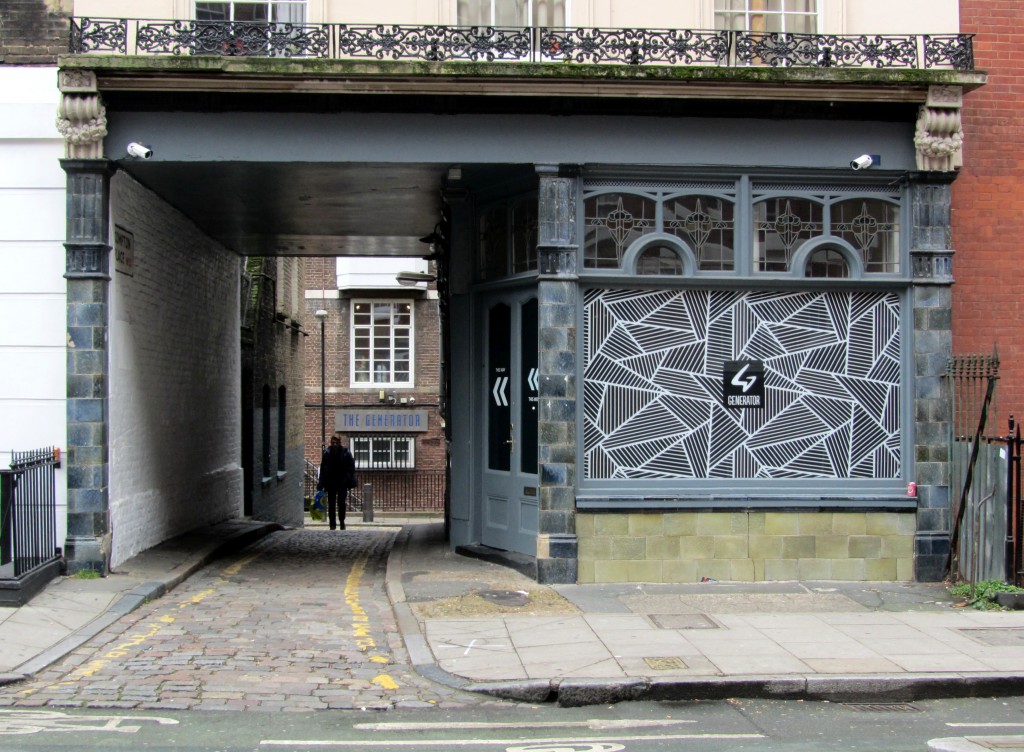
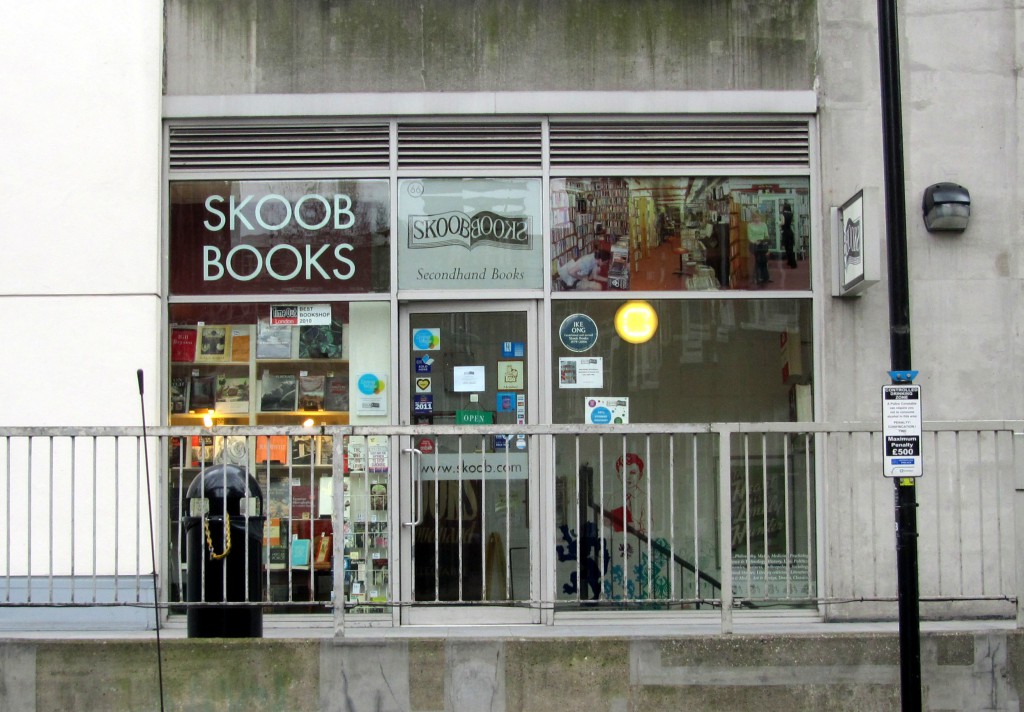
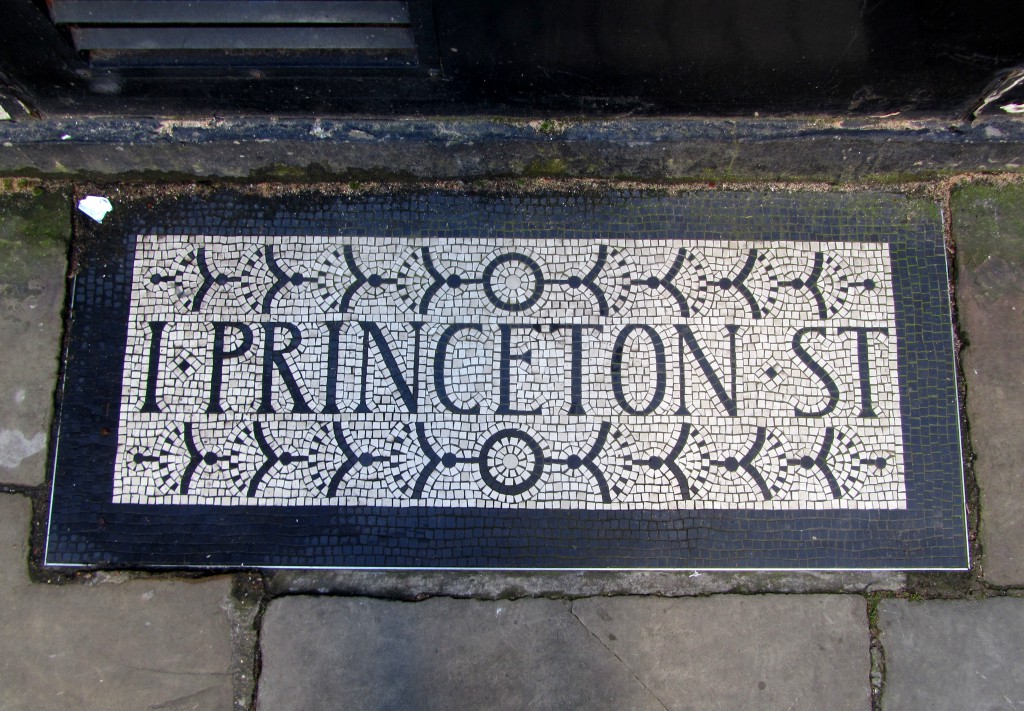
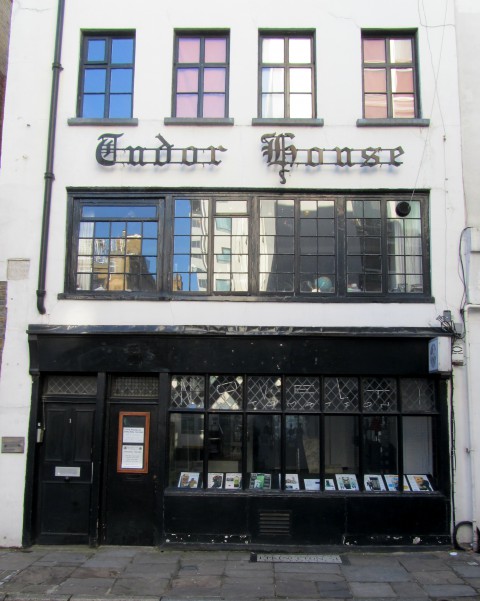
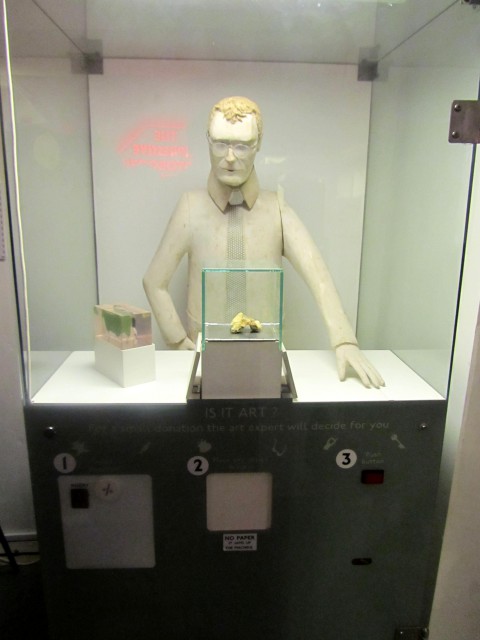

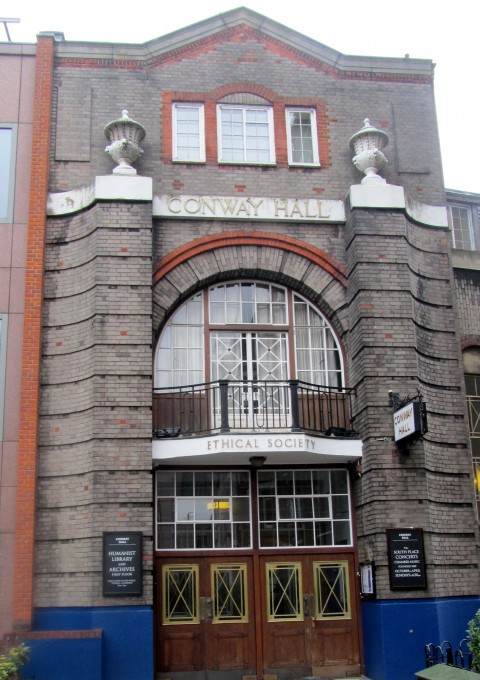
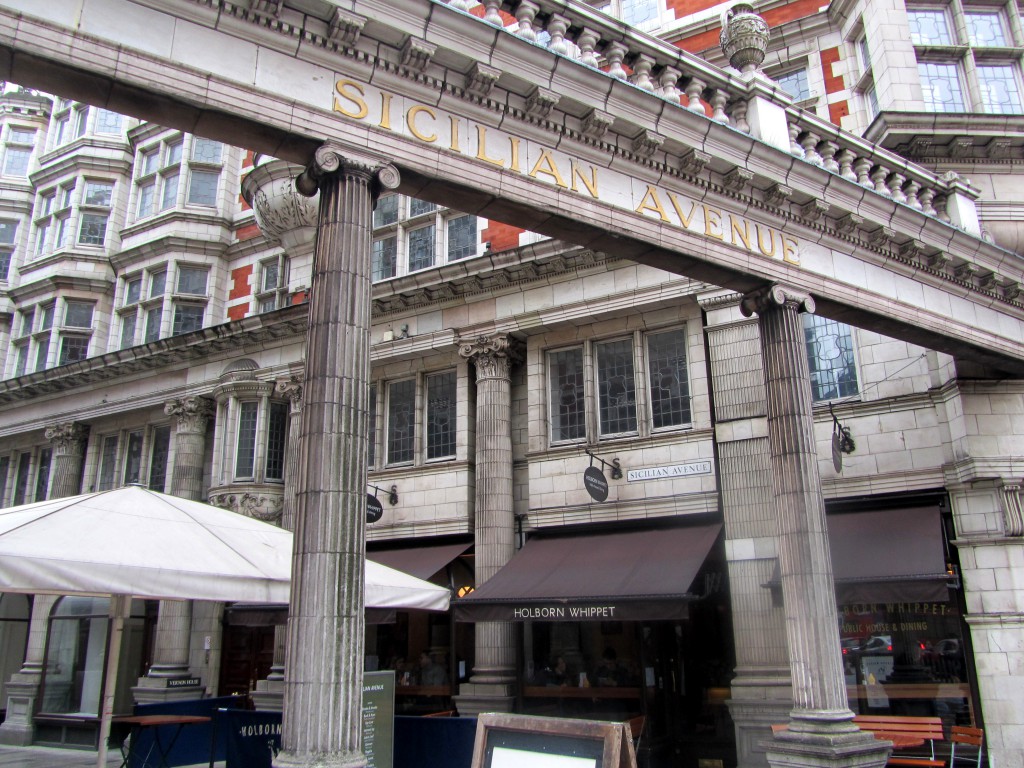
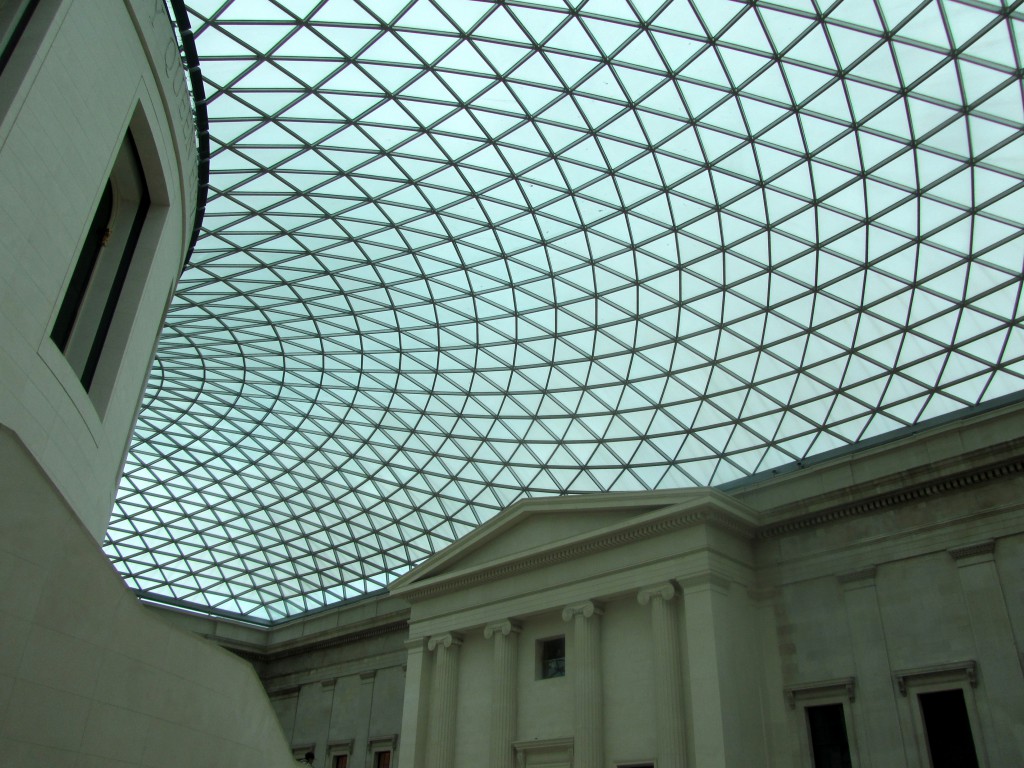
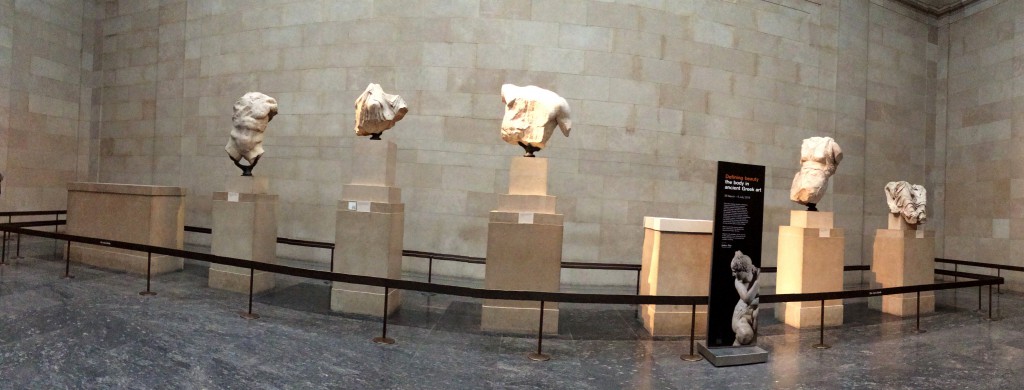
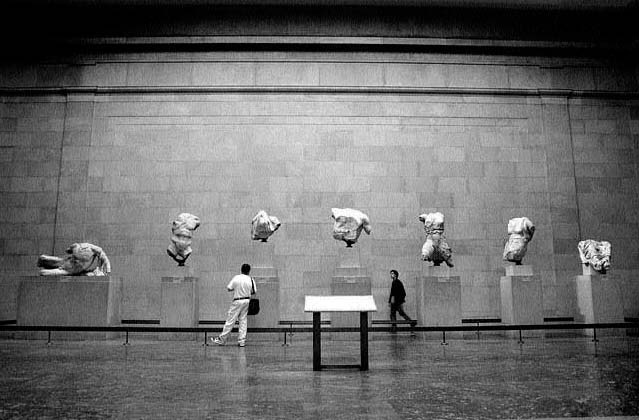
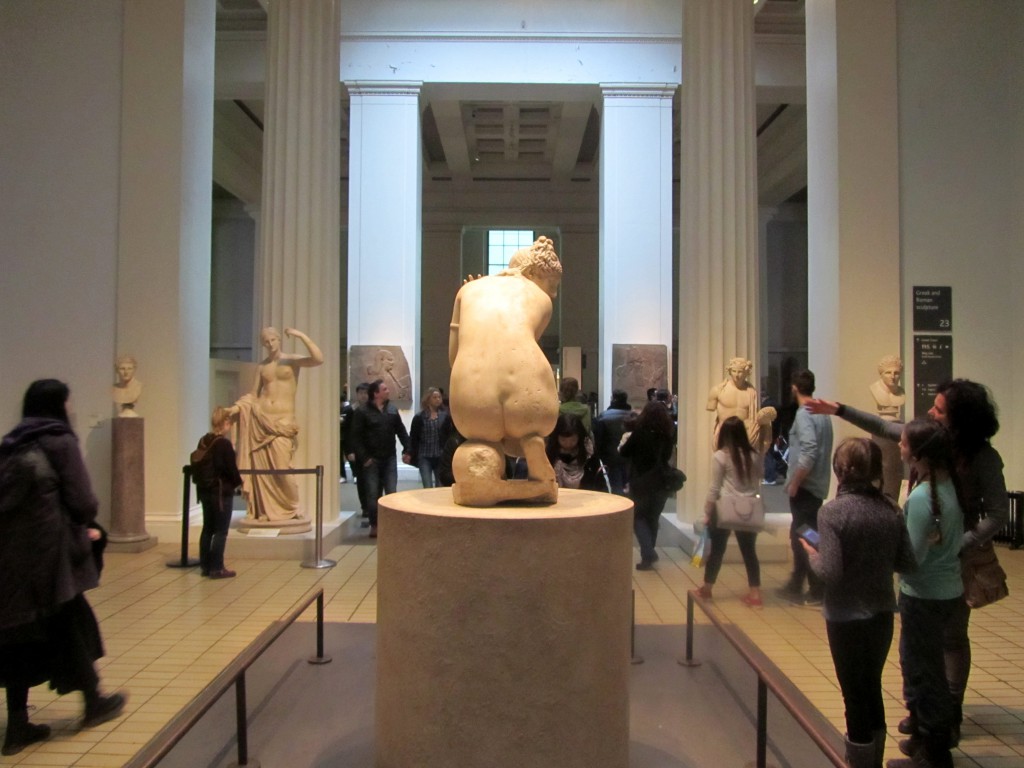
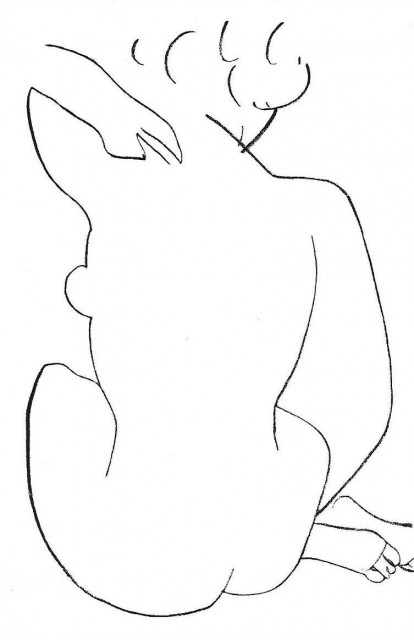
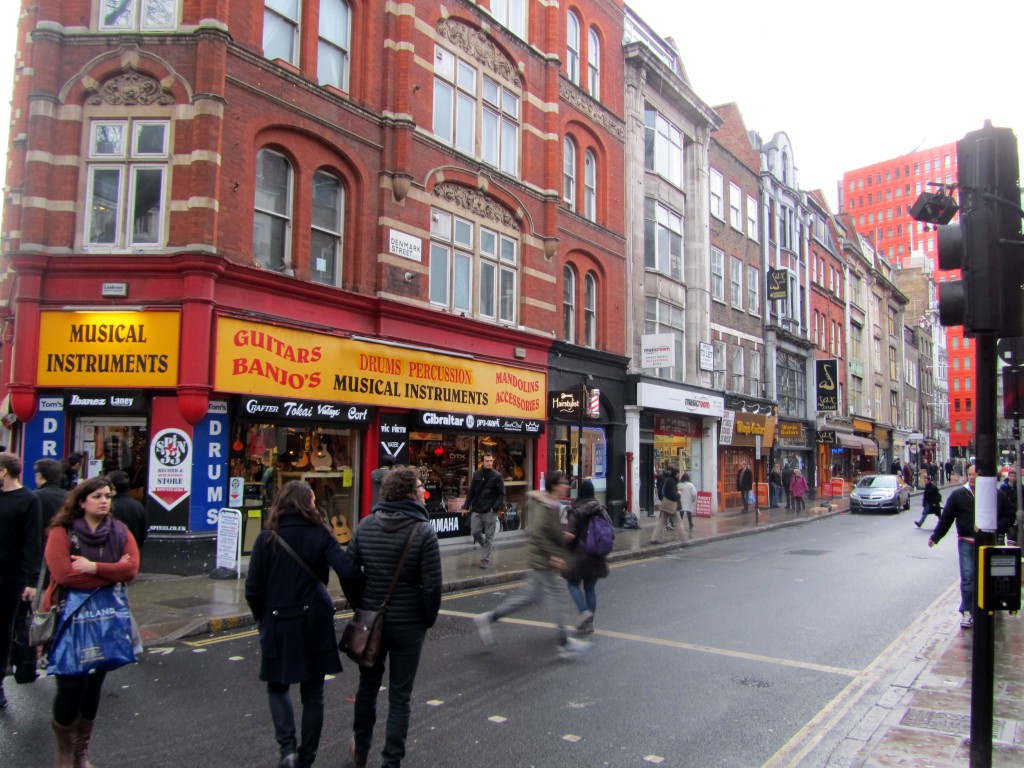

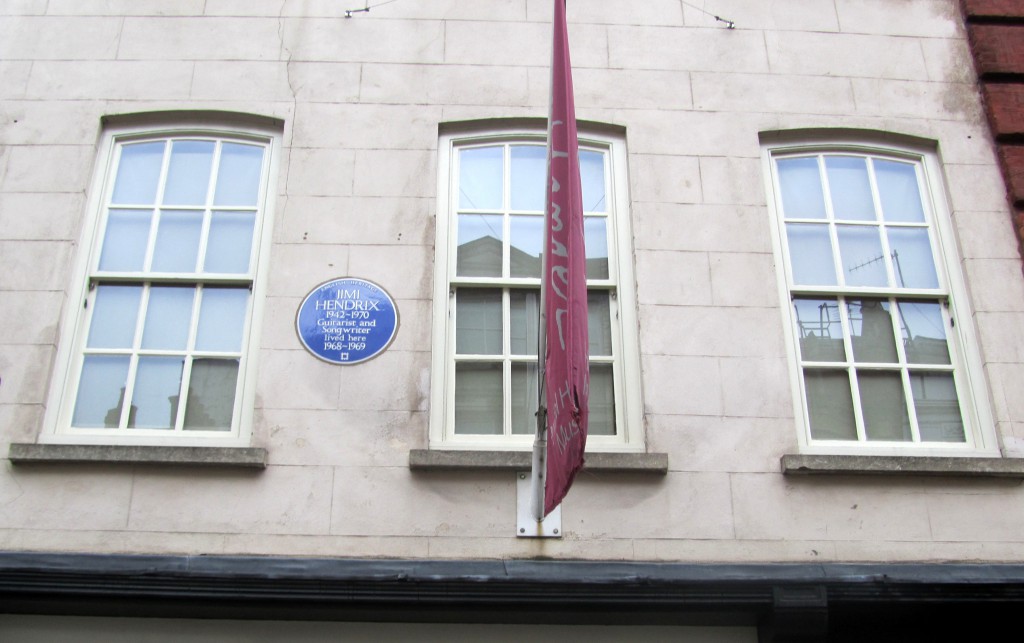

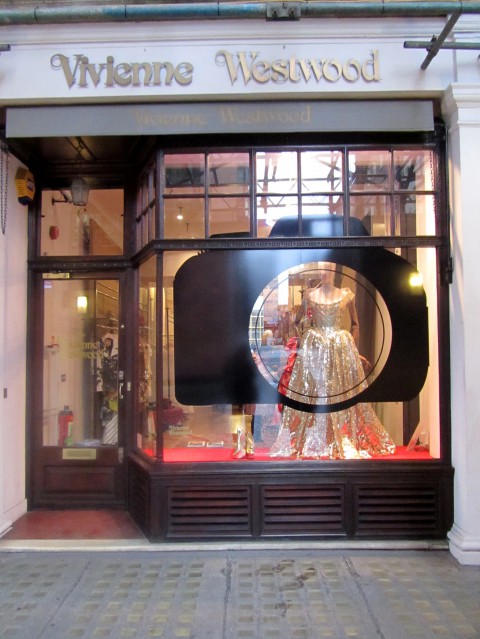
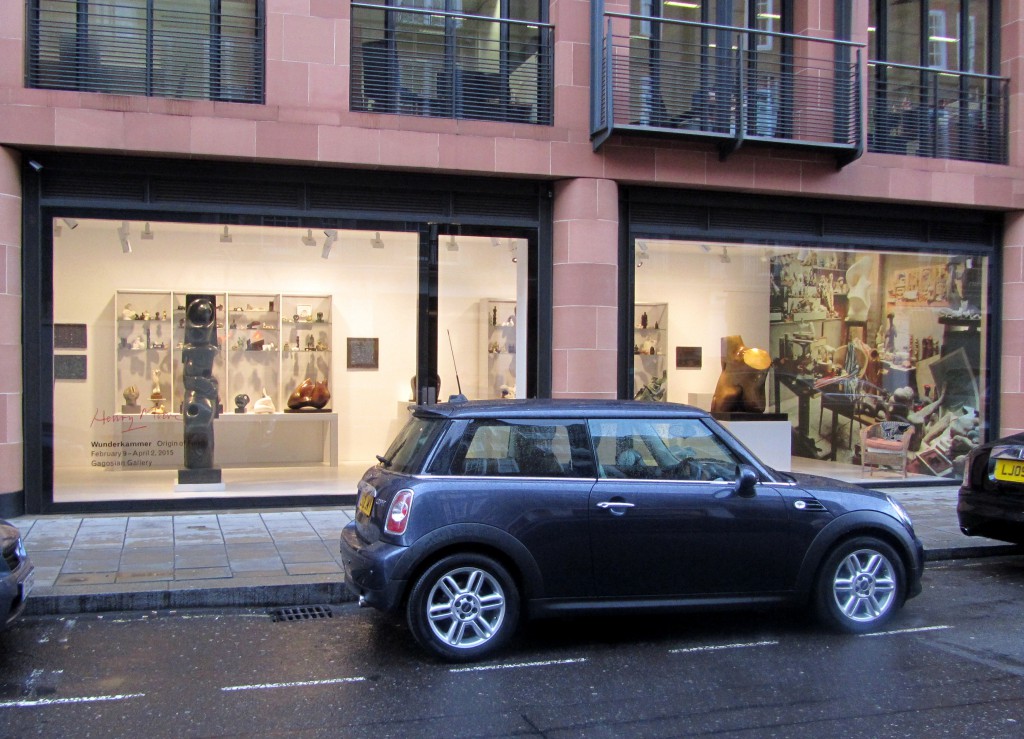
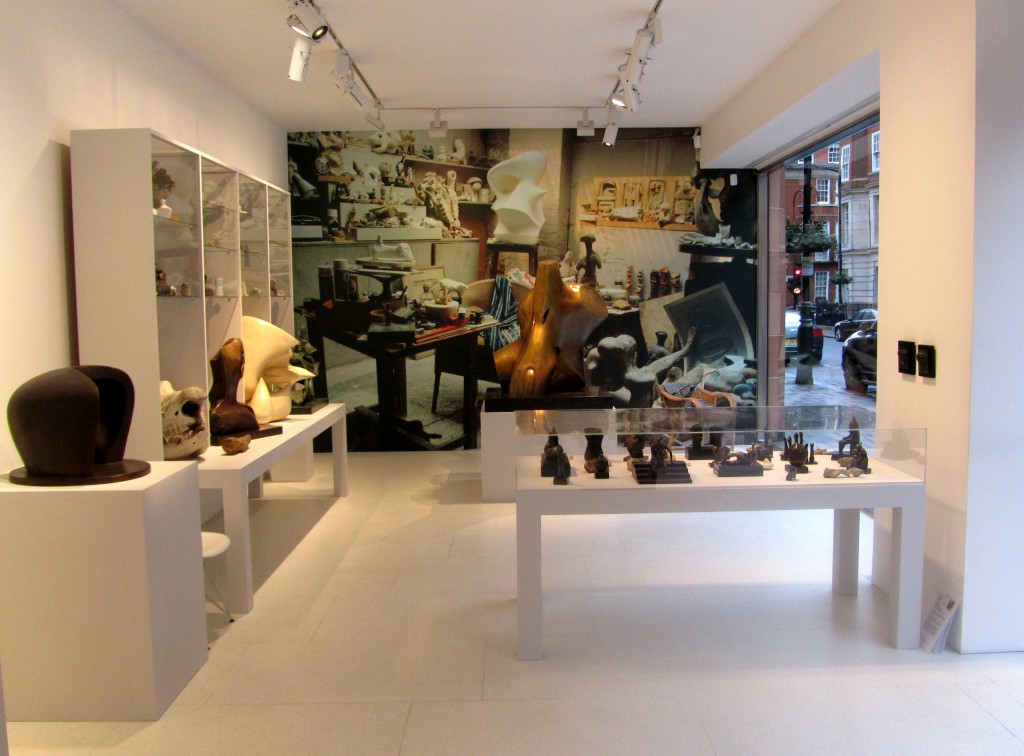
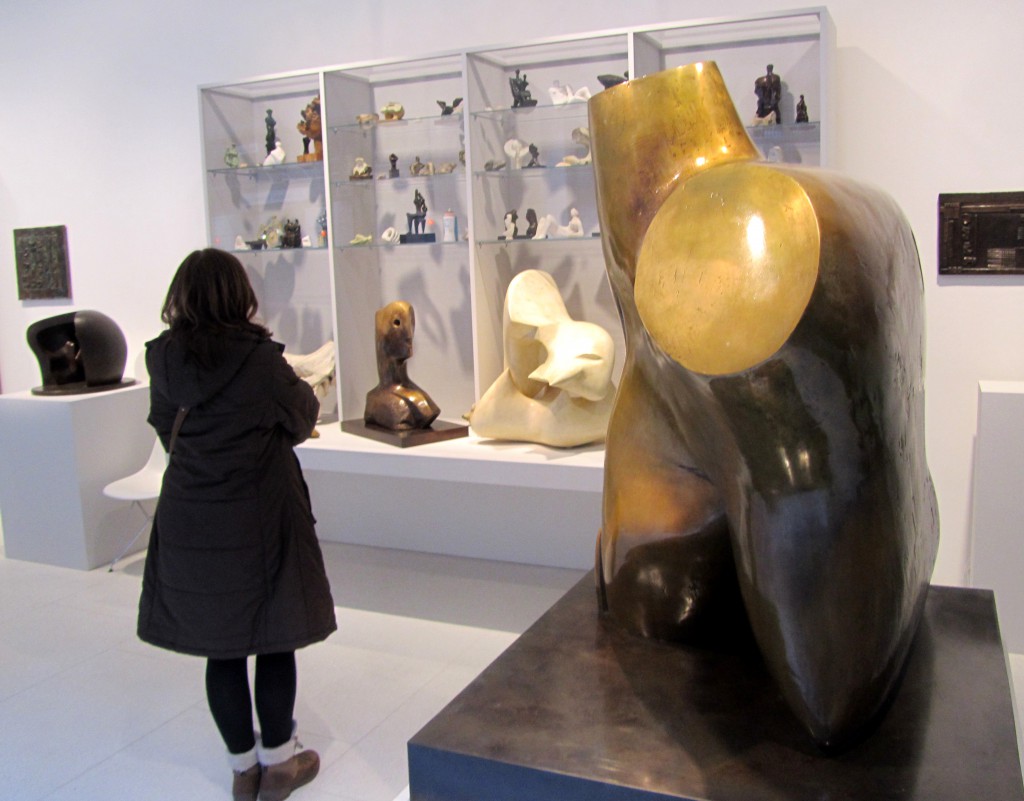
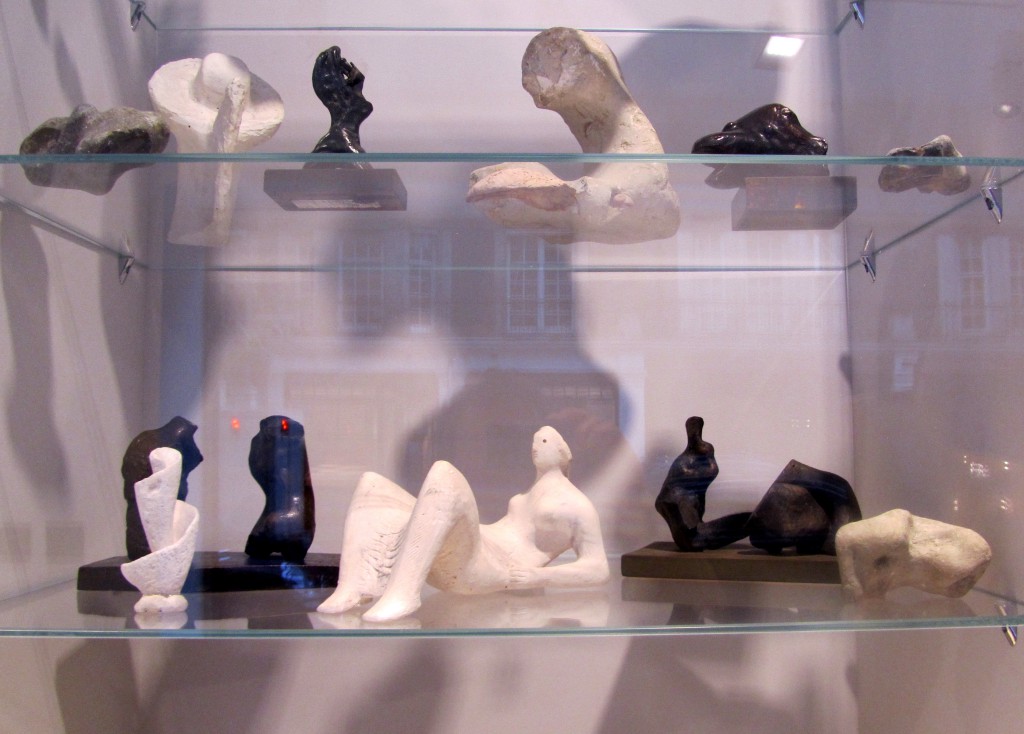
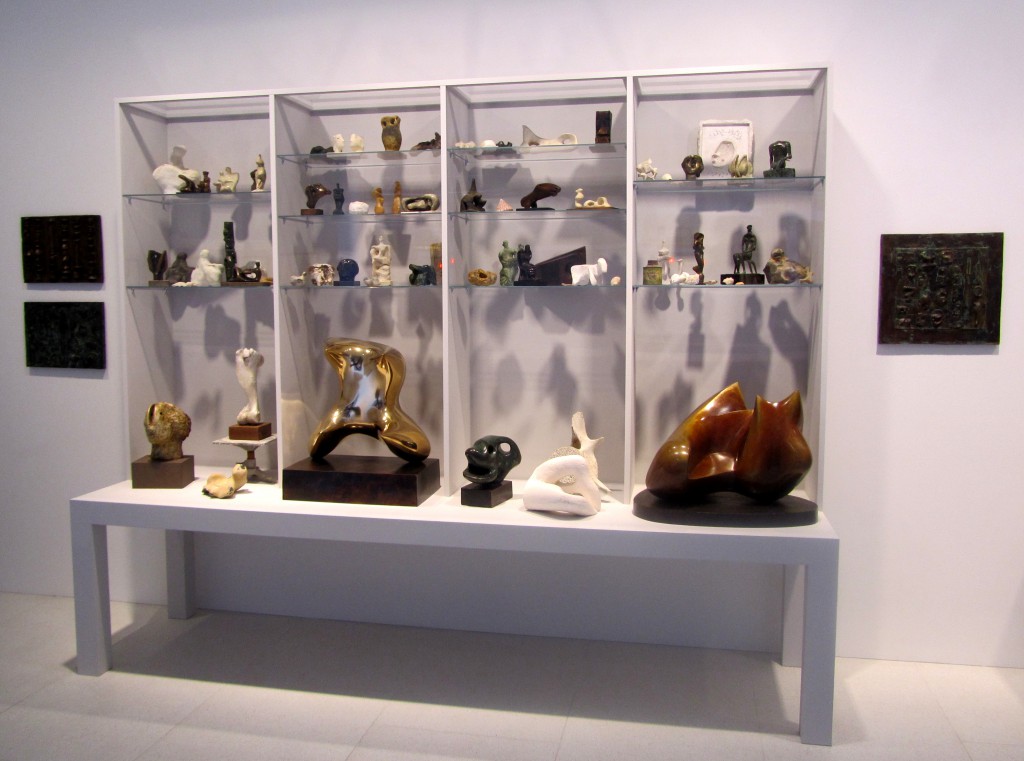
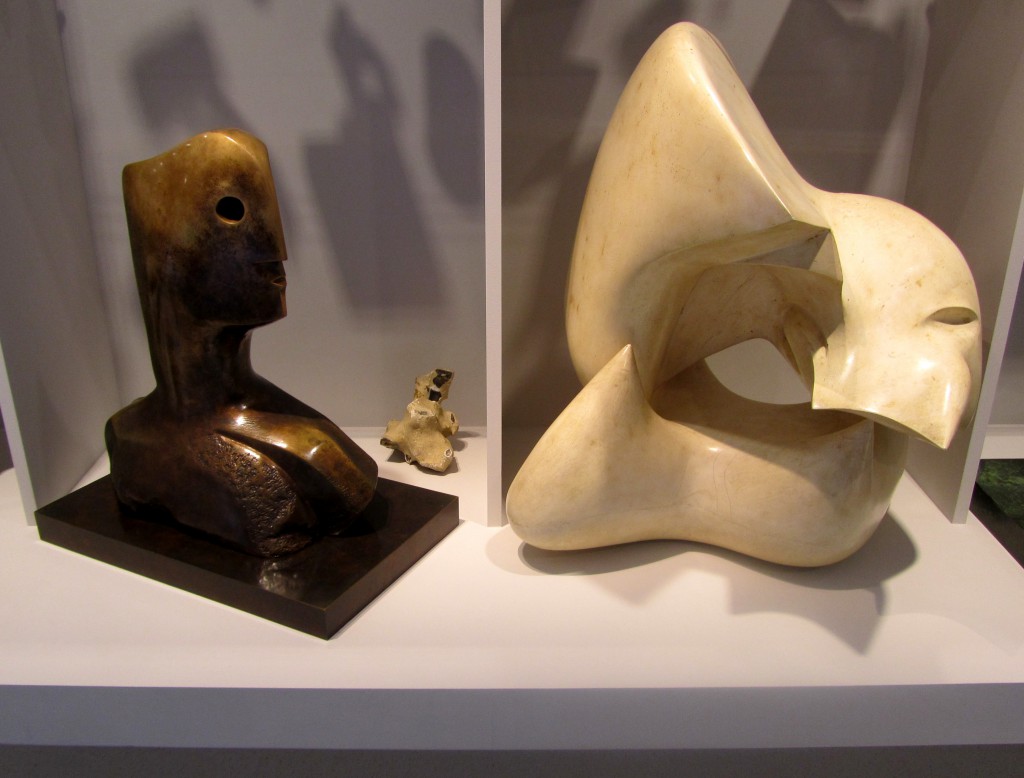
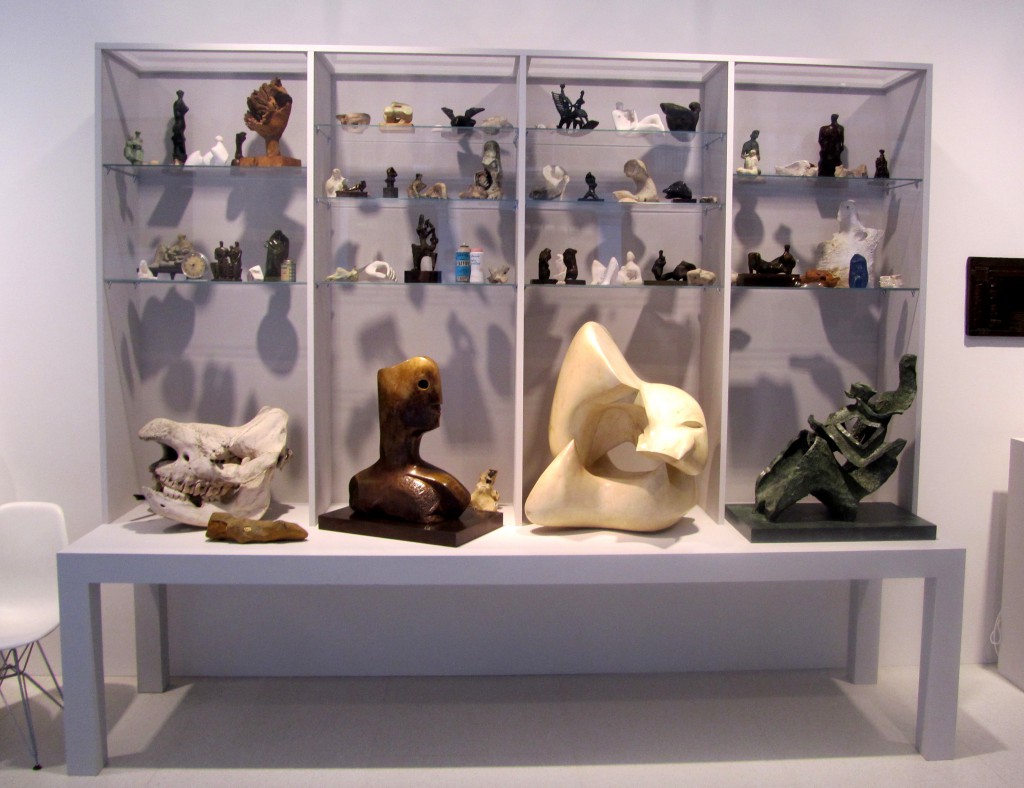

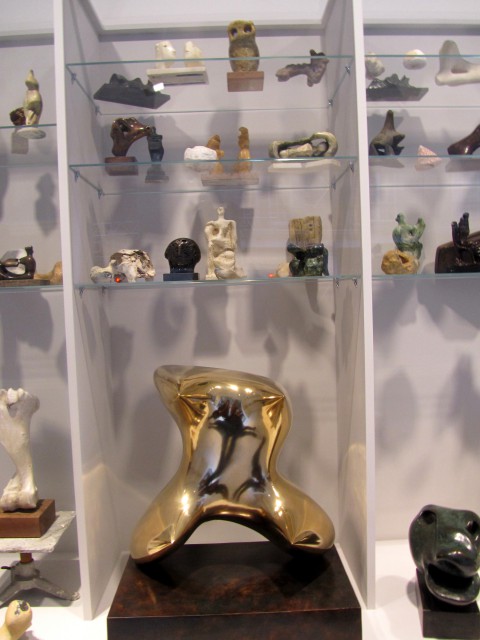
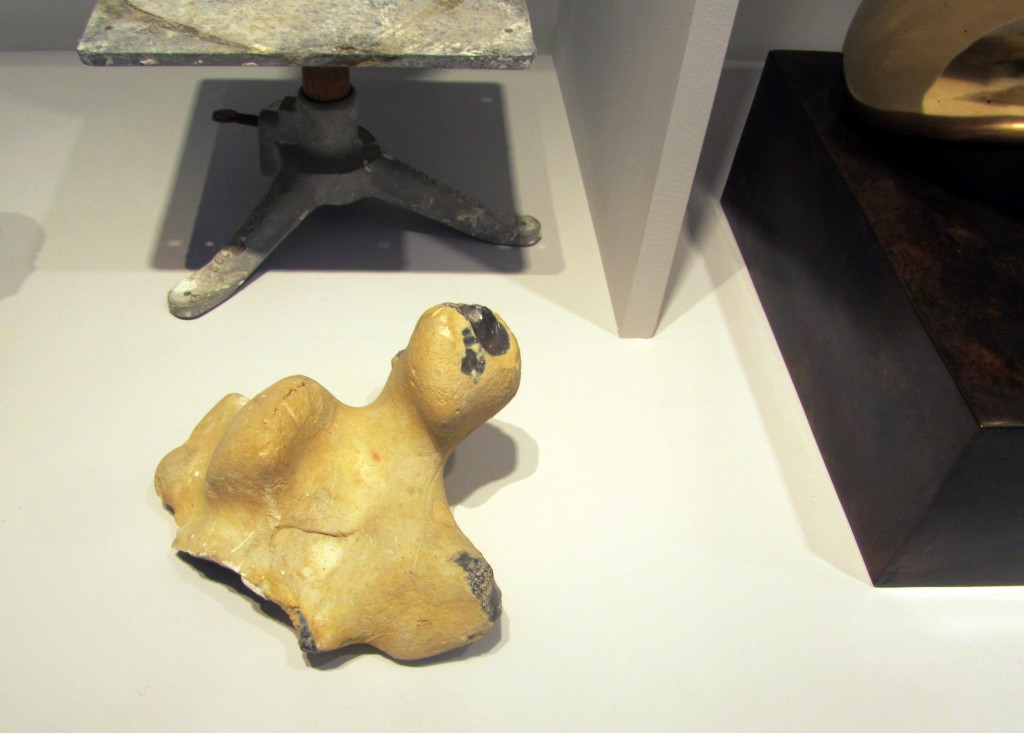
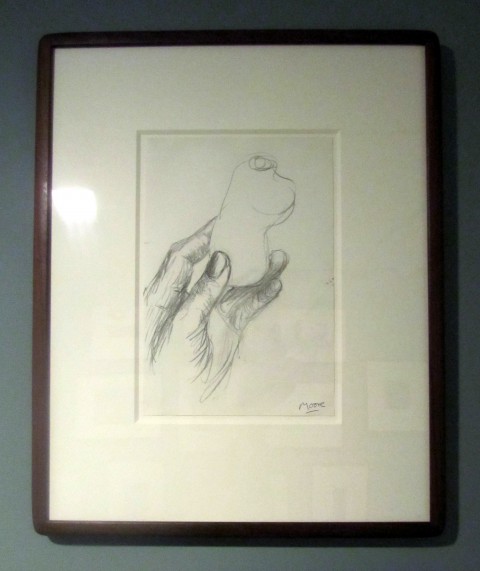
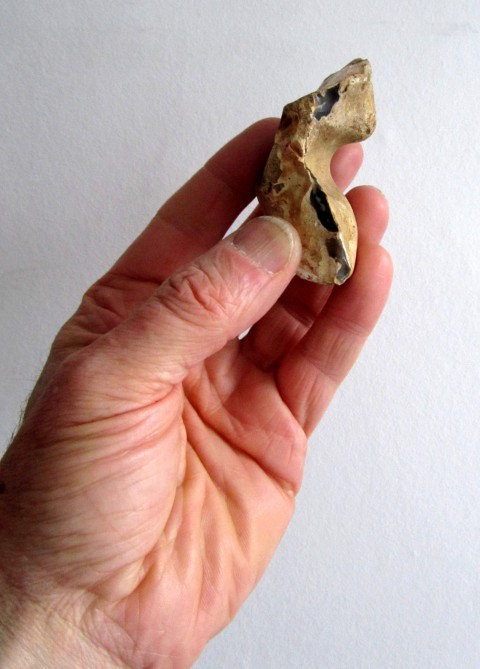

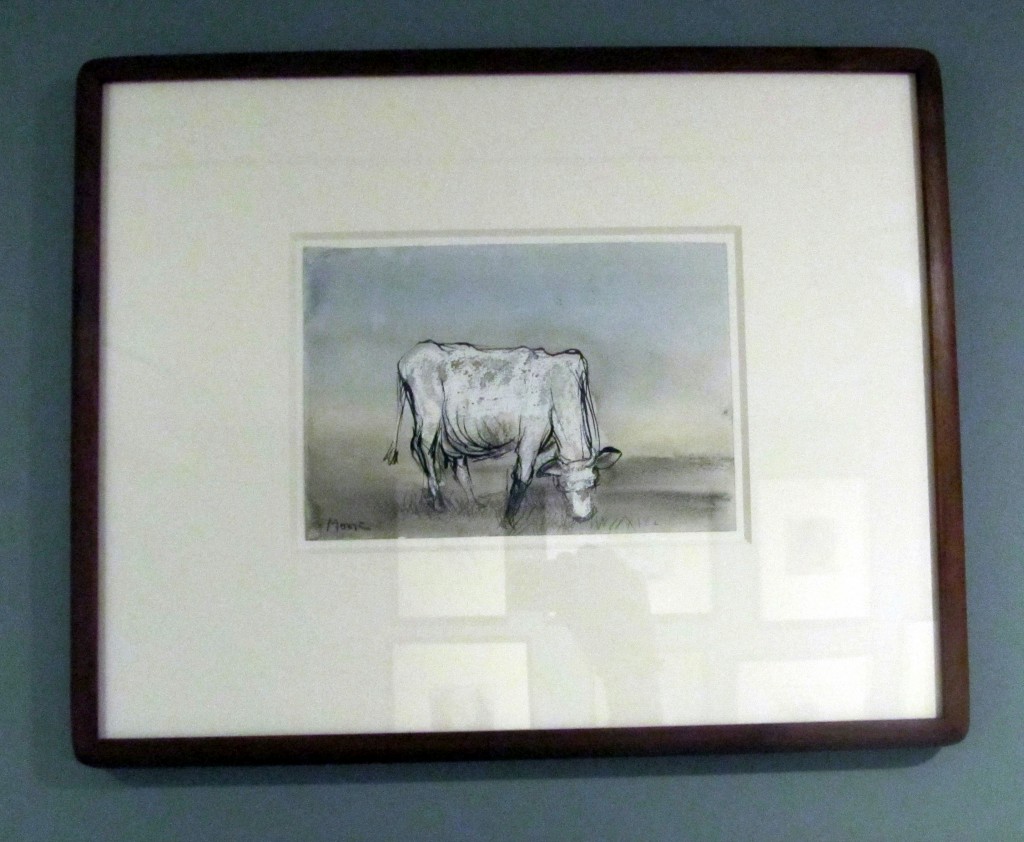
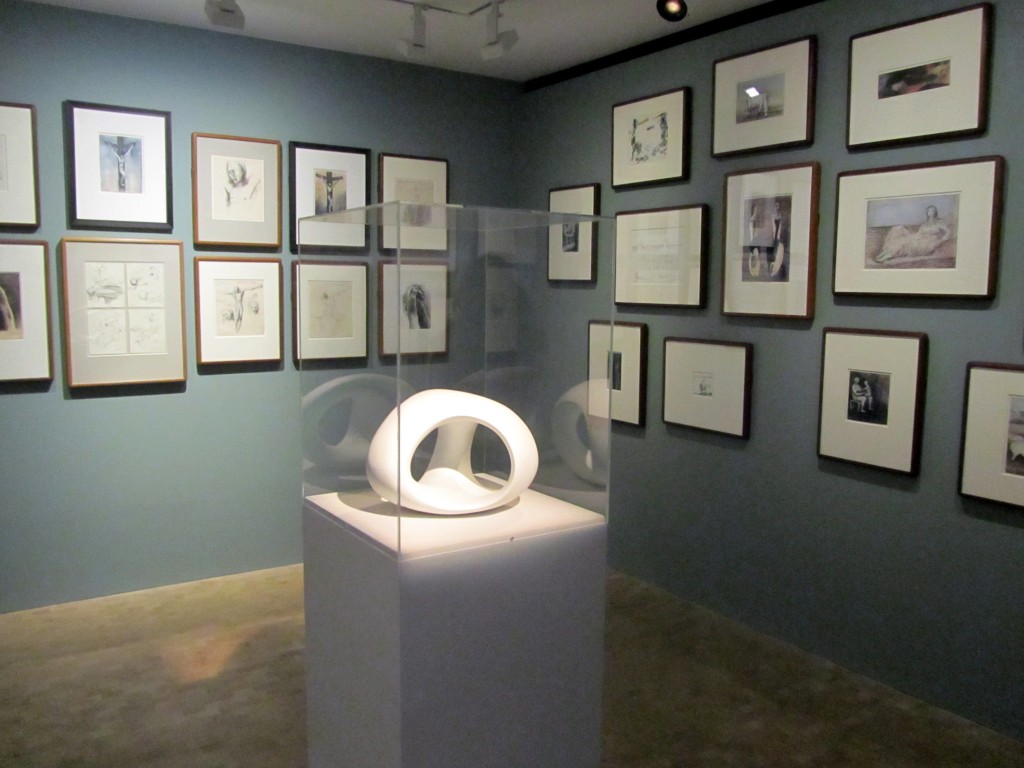
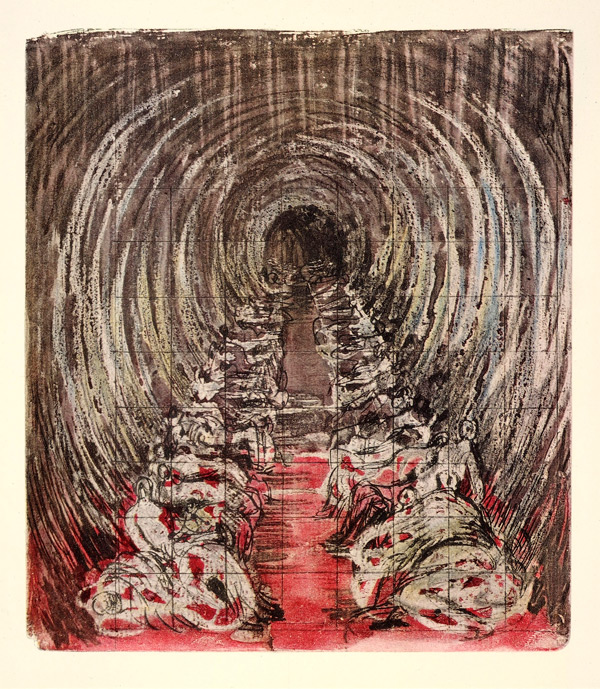
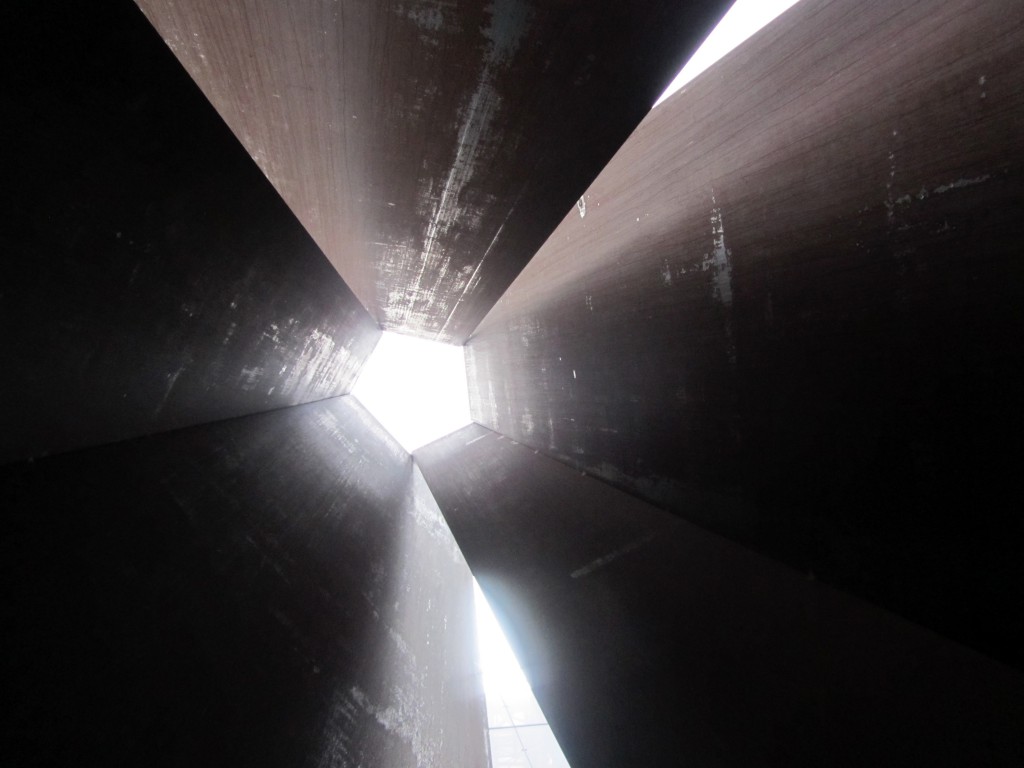
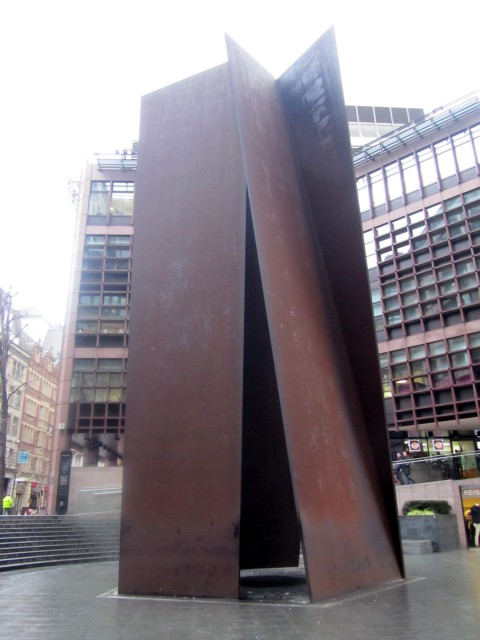
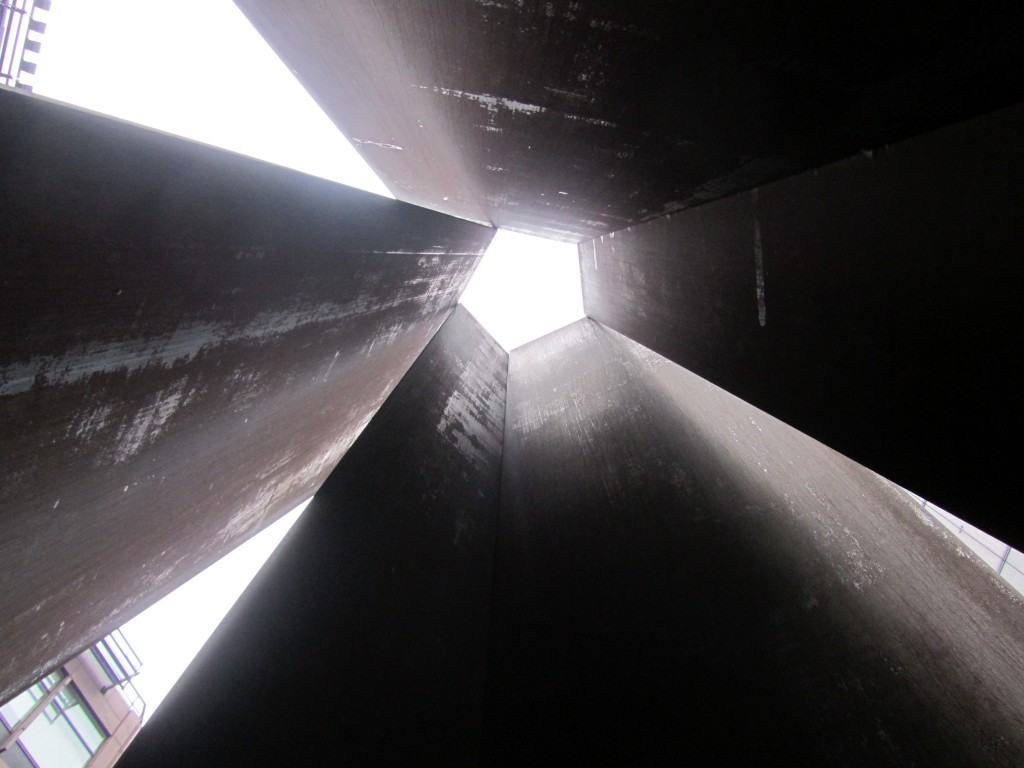
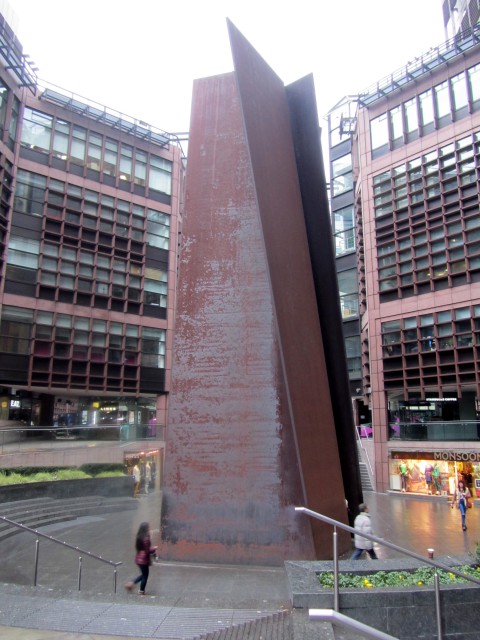
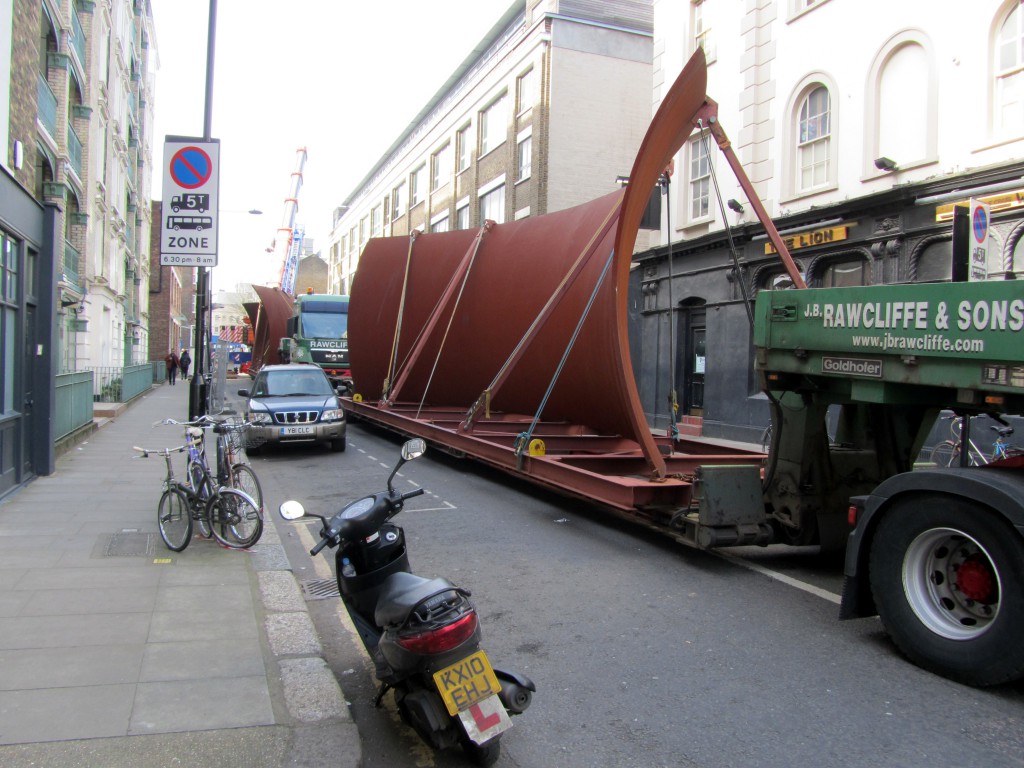
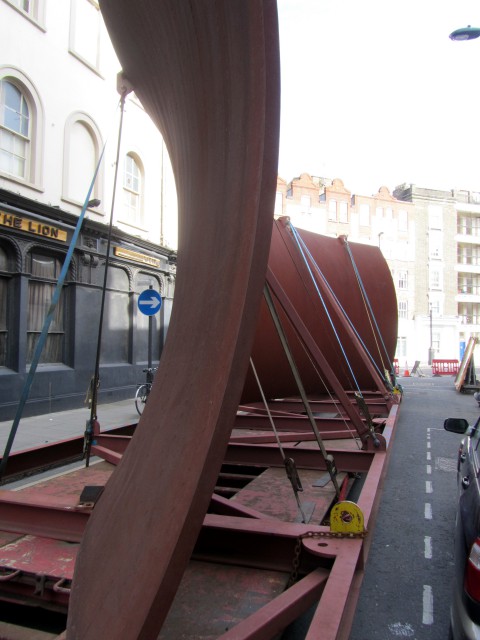

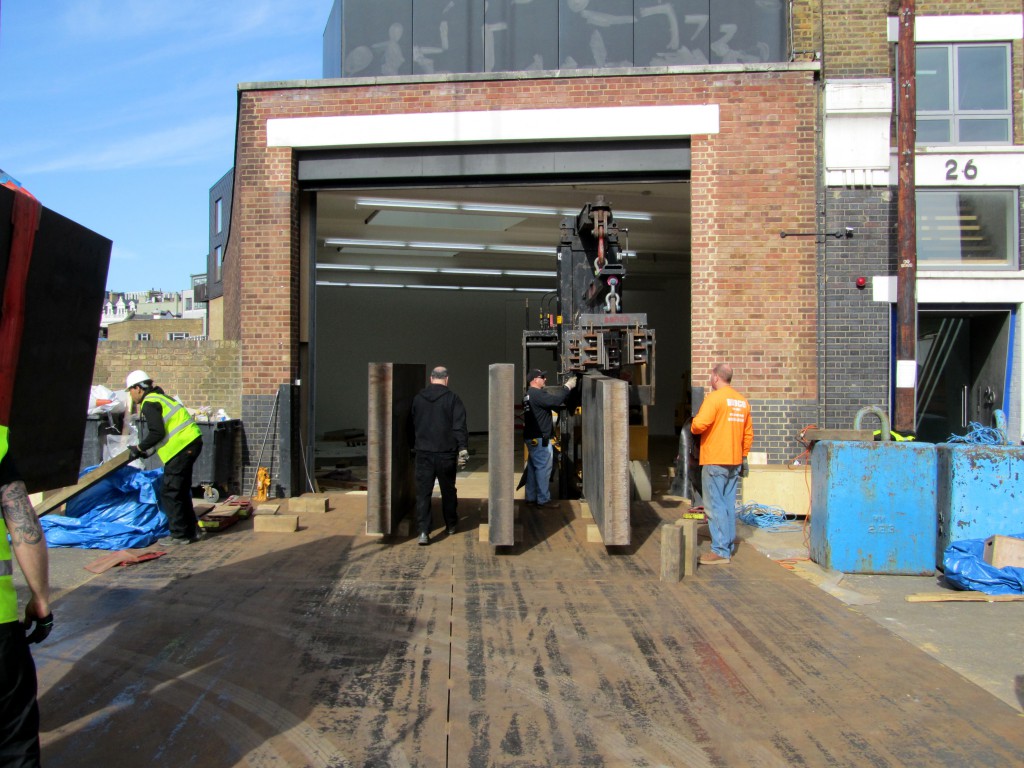
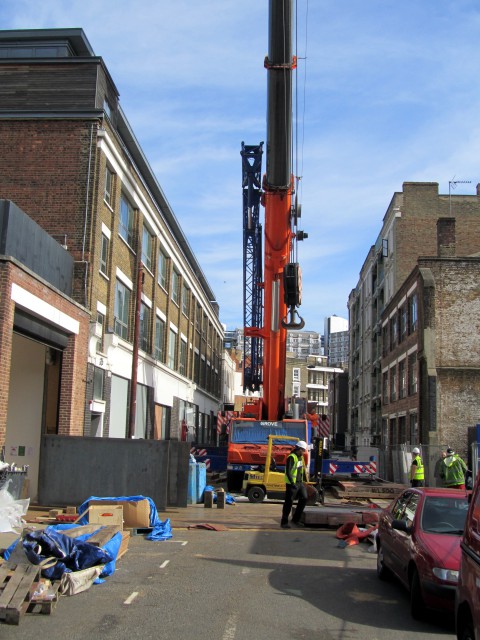
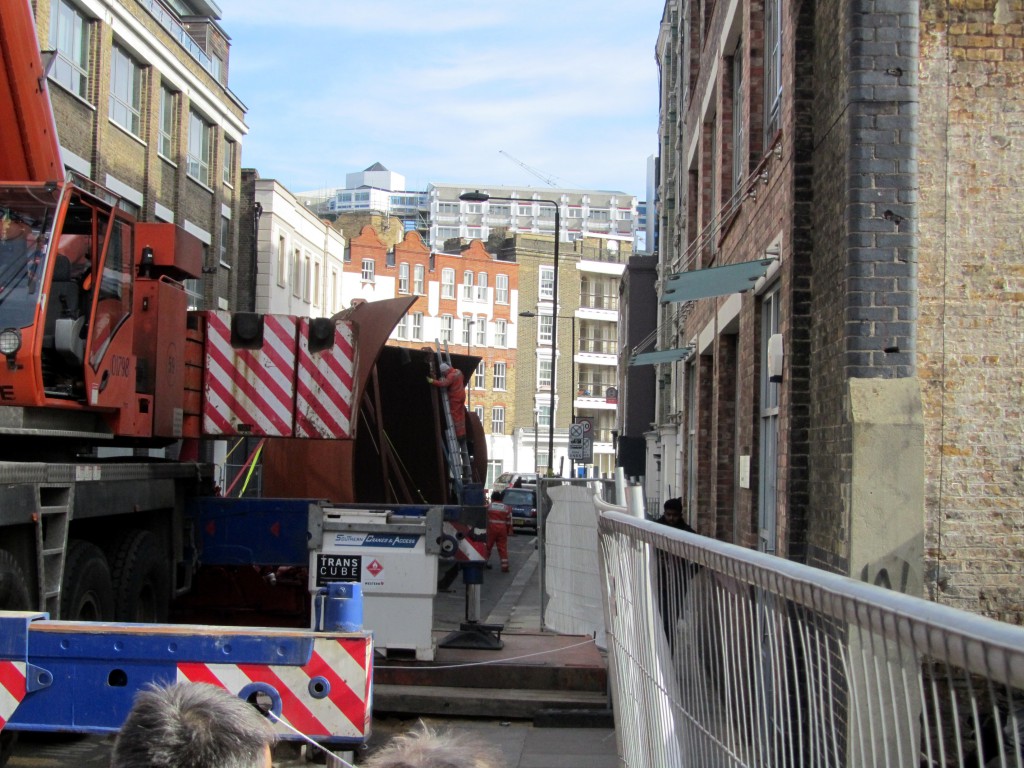

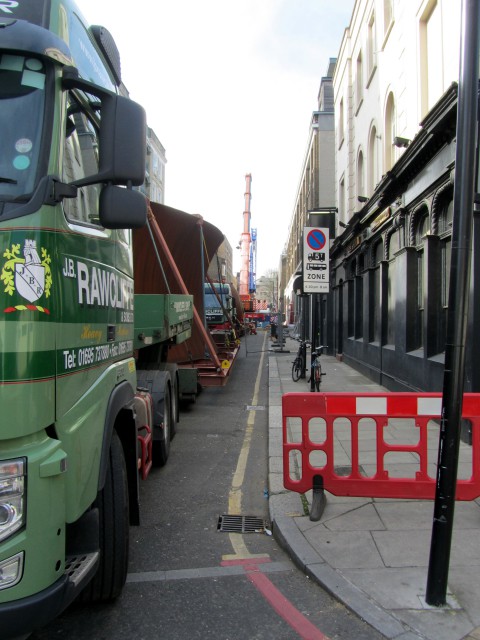
I really enjoyed reading this post and felt I was trotting along behind you. Two things: firstly, I would be interested to know what camera you were using – I am not too struck on iPhone images but a full SLR is sometimes too much, is there something in between? Secondly, like you I am an admirer of Henry Moore – you might like this post of mine http://westernindependent.blogspot.com/2014/08/moore-rodin-at-compton-verney.html – all images Canon SLR by the way.
Thanks for looking. The camera’s a Canon Power Shot, nothing flashy. I was sorry to miss the Moore Rodin show, so thanks for the link and for the beautiful photo.
Thanks for the amazing walk from the ease of my chair! I’m always inspired by your wanderings!
Fascinating to see places I have known so well having lived in Camley Street for 30 years. The place is changing so rapidly it’s not easy to recognise now. I’m eager to go wander myself now and stand in the Serra sculptures!
Thanks Sue. I know Camley Street for its nature reserve, and we had friends around the corner in Culross Buildings.
A fine wander of wonder! Love the Serra works.
The Serra works were amazing, and then as a bonus I got to see them on the move!